Joan Miró
Joan Miró (1893 –1983) was a Spanish painter, sculptor, and ceramicist born in Barcelona. A museum dedicated to his work, the Fundació Joan Miró, was established in his native city of Barcelona in 1975, and another, the Fundació Pilar i Joan Miró, was established in his adoptive city of Palma de Mallorca in 1981.
Earning international acclaim, his work has been interpreted as Surrealism but with a personal style, sometimes also veering into Fauvism and Expressionism. He was notable for his interest in the unconscious or the subconscious mind, reflected in his re-creation of the childlike. His difficult to classify works also had a manifestation of Catalan pride. In numerous interviews dating from the 1930s onwards, Miró expressed contempt for conventional painting methods as a way of supporting bourgeois society, and declared an "assassination of painting" in favour of upsetting the visual elements of established painting.(Wikipedia)
"Via his own Surrealism-inspired exploration, Miró invented a new kind of pictorial space in which carefully rendered objects issuing strictly from the artist's imagination became juxtaposed with basic, recognizable forms. His use of interior emotion to drive abstract expression would become a great influence on the Abstract Expressionists.Even though he pared his forms to abstract schematics or pictorial signs and gestures Miró's art never settled into complete non-objectivity. Rather, he devoted his career to exploring various means by which to dismantle traditional precepts of representation.Miró balanced the kind of spontaneity and automatism encouraged by the Surrealists with meticulous planning and rendering to achieve finished works that, because of their precision, seemed plausibly representational despite their considerable level of abstraction.Miró often worked with a limited palette, yet the colors he used were bold and expressive. His chromatic explorations, which emphasized the potential of fields of unblended color to respond to one another, as well as his flat backgrounds with mild gradations of color, were valuable resources, providing inspiration for Color Field painters such as Helen Frankenthaler.Miró was a modern renegade who refused to limit himself to visual exploration in a single medium. While he explored certain themes such as that of Mother and Child repeatedly throughout his long career, he did so in a variety of media from painting and printmaking to sculpture and ceramics, often achieving surprising and disparate results."(theartstory.org)
Earning international acclaim, his work has been interpreted as Surrealism but with a personal style, sometimes also veering into Fauvism and Expressionism. He was notable for his interest in the unconscious or the subconscious mind, reflected in his re-creation of the childlike. His difficult to classify works also had a manifestation of Catalan pride. In numerous interviews dating from the 1930s onwards, Miró expressed contempt for conventional painting methods as a way of supporting bourgeois society, and declared an "assassination of painting" in favour of upsetting the visual elements of established painting.(Wikipedia)
"Via his own Surrealism-inspired exploration, Miró invented a new kind of pictorial space in which carefully rendered objects issuing strictly from the artist's imagination became juxtaposed with basic, recognizable forms. His use of interior emotion to drive abstract expression would become a great influence on the Abstract Expressionists.Even though he pared his forms to abstract schematics or pictorial signs and gestures Miró's art never settled into complete non-objectivity. Rather, he devoted his career to exploring various means by which to dismantle traditional precepts of representation.Miró balanced the kind of spontaneity and automatism encouraged by the Surrealists with meticulous planning and rendering to achieve finished works that, because of their precision, seemed plausibly representational despite their considerable level of abstraction.Miró often worked with a limited palette, yet the colors he used were bold and expressive. His chromatic explorations, which emphasized the potential of fields of unblended color to respond to one another, as well as his flat backgrounds with mild gradations of color, were valuable resources, providing inspiration for Color Field painters such as Helen Frankenthaler.Miró was a modern renegade who refused to limit himself to visual exploration in a single medium. While he explored certain themes such as that of Mother and Child repeatedly throughout his long career, he did so in a variety of media from painting and printmaking to sculpture and ceramics, often achieving surprising and disparate results."(theartstory.org)
Renzo Vespignani - Neorealism
Renzo Vespignani (1924 -2001)was
an Italian painter, printmaker and illustrator. Vespignani illustrated
the works of Boccaccio, Kafka and T. S. Eliot, among others.In 1956, he
co-founded the magazine Citta Aperta ("City Opened") and in 1963,
co-founded the group II Pro e II Contro (Pro and Con) for neorealism in
figure art.Renzo Vespignani was born in Rome, Italy in 1924, and he grew
up in a Roman working-class suburb named Portonaccio. He began to paint
during the difficult years of the German occupation of Rome, hiding
himself at Lino Bianchi Barriviera’s residence.His drawings in 1944
recorded the ravages of German-occupied Rome in realistic detail.Those
images, often likened to German Expressionist works, were featured in
his first solo exhibition at Rome's Galleria La Margherita in 1945.
Meanwhile, he collaborated as a designer with many political-literary
reviews done as poetic documentaries, relating to the cinema of
Rossellini and Vittorio de Sica.After the war, Vespignani contributed
illustrations to political and literary journals.At New York's Hugo
Gallery, his works were introduced to the U.S. in 1948.In 1956 he
co-founded, with other intellectuals, the review Citta Aperta ("City
Opened"), a magazine concerning the city culture’s problems.At this
time, his work had begun to focus on life in the harsh neighborhoods of
Rome's periphery, displaying a connection with the films and literature
of Italian Neorealism.Wikipedia
Franciszek Starowieyski
Franciszek Andrzej Bobola Biberstein-Starowieyski (July 8, 1930, in Bratkówka, Poland – February 23, 2009) was a Polish artist. From 1949 to 1955 he studied at the Academy of Fine Arts in Kraków and Warsaw. He specialized in poster, drawing, painting, stage designing, and book illustration. He was a member of Alliance Graphique International (AGI). Throughout his career his style deviated from the socialist realism that was prevalent during the start of his career and the popular, brightly colored Cyrk posters; however he did create one Cyrk poster Homage to Picasso in 1966.
He was the first Polish artist to have a one-man show at the Museum of Modern Art (MoMA) in New York, in 1986.Wikipedia... "Endowed with a baroque imagination, Starowieyski is highly adept at combining sensuous forms with intellectual messages, producing unexpected effects and shocking surrealist visions. His art is exquisitely ornamental and uses a plethora of unique metaphors and an individual system of signs originating from his beloved baroque esthetics. His paintings reveal a fascination with the sensuous, Rubensian female bodies and convey a reflection on passing and death. Saturated with grotesque and humour, his art combines the real world with creations of his rampant imagination and makes ostentatious references to the 17th century masters. Starowieyski, who is a master of drawing, says of himself,
"Ever since I remember, drawing has been my language. It best expresses my thoughts".
The calligraphically precise lines of his drawings are impressive. He uses them to buil extraordinary, surrealist visions which combine dissimilar, unrelated motifs to achieve grotesque and metaphorical meanings. His predilection for calligraphy, penchant for fantasy, preference for the macabre and pursuit of the anatomy as well as his chiaroscuro, modeling and dynamic compositions are all rooted in the 17th century. His works often include German-like commentaries styled to look like the 17th century calligraphy, as well as titles executed in ornamental lettering. Since 1970 he has been back-dating his works by three hundred years, maintaining that this reflects the state of his soul and mind, a spirit of a 17th century ancestor having incarnated himself in him. He said in an interview that he has the impression of living "in those times, and the rest - things that took place later, up to what we take to be today - is just a matter of imagination".
He likes to shock with his art and his behaviour, Salvadore Dali undoubtedly being his role model. He once said, "The viewer expects the artist to scandalize, insult and shock him". His popularity started as early as the 1960s with a series of theatre and film posters. Indeed, owing to him the poster acquired the status of a stand-alone art." (Autor: Ewa Gorzałek, Centre for Contemporary Art at Ujazdowski Castle, May 2006; updated: February 2009 culture.pl )
Theo Tobiasse
"Theo Tobiasse, master of the Paris School, was born in Jaffa, Israel in 1927 of Lithuanian parents. His father, a Zionist, was a printer and in order to find work, he moved the family to Paris in 1931. Tobiasse has never forgotten his first sight of Paris, the City of Light. During the Nazi occupation of Paris, the Tobiasse family lived hidden for two years in a minuscule apartment in Paris. From July 1942 through August 1944, the family never ventured outside, nor would they turn on the lights or burn candles. By the feeble light that filtered through the closed shutters, Theo spent his time reading, drawing, and playing chess with his father. The chessboard pattern seen in many of Theo’s paintings is symbolic of this time in his life. He attributes his works to his real life experiences. He believes that because of these experiences, he has reached a place of perfect contentment and harmony. This is apparent in his works through the use of colors and textures.The only indication of time passing was the sound of Nazi boots in the streets and on the staircase of their house – more than once they were very close to being discovered. On August 25, 1944 Paris was liberated, and Theo walked out of the apartment with a large portfolio of drawings into the light of a cloudy day.
After the war Tobiasse worked for 15 years as a very successful advertising artist, first in Paris and then in Nice. He painted as often as he could during this time, often at night. In 1960 he entered his first art show and won the Grand Prize. Since 1961, Tobiasse has enjoyed incredible worldwide success.
In 1976 he moved his studio to St. Paul-de-Vence where he rediscovered both the sky of Jerusalem and that of Florence. It was in Nice, the city he had adopted upon leaving Paris, that his pictorial expression came into its own. Initially profane and close to certain bestiaries, his subjects rapidly evolved towards reminiscences about his childhood: buses that he had caught sight of on his journey to France, boats with wheels, tea kettles, the warmth of the fireside, the trains when he arrived in Paris at dawn, the smokiness of railway stations, etc. All of these symbols were combined, with Biblical or erotic fantasies and also with the theme of exile, which had become his main interest over the previous few years. Often visible in his more recent work, the theme of exile took on a more dramatic dimension when it began to encompass not only past and present exiles, but the fear of exiles still to come. This background subject, currently his main preoccupation, is woven out of women, children, crowds, but also candelabra, which represent the glow of hope. Since 1980, Theo Tobiasse has travelled a great deal in the United States. Fascinated by New York, he decided to find a place where he could work for several months every year.
This allowed him to work more closely with his friends and dealers, Kenneth and Sherri Nahan. Many exhibitions and one-man shows have been held throughout the world, providing milestones for his work that is to be found in the catalogues of many International Museums. Theo Tobiasse has created monumental works such as the fountain entitled “L’Enfant Fou” for the Arenas Business Centre at Nice Airport, and stained-glass windows for various institutions in Strasbourg and Nice. He also designed costumes and state-set models for Bernard Shaw’s “Pygmalion”. He has filled many sketchbooks, some of which have been published, and created illustrated works for lovers of fine books, plus etchings and engravings. Theo Tobiasse also discovered a passion for ceramics, producing pottery and dishes, as well as a series of small bronze sculptures. Several monographs have been published on Theo Tobiasse’s work.
His works have been on exhibition throughout the western world and Japan. Tobiasse has also worked in etching, lithography and many more mediums. He is one of the rare artists who truly create original graphics making his own plates and closely supervising all aspects of the printing process.
A sentimental and private individual, Tobiasse puts his innermost feelings into all of his works and his little “secret” into his original paintings: a personal message which he writes in Yiddish and then glues onto the canvas before painting or collaging over it. No one will ever know the message without destroying the painting itself!"(elliottgallery.com/theo-tobiasse/)
Leon Bellefleur
" Leon Bellefleur was born in Montreal on february 8, 1910. His father objected to his desire to study at Beaux Arts. After graduating from École normale Jacques-Cartier, he starts his career as a school teacher which will last for twenty-five years. He marries Rita Jolicoeur in 1934. They have five children together.
He starts making drawings before he is ten years old. Eventually, he goes into painting. In 1946, he holds his first exhibition presented along with the drawings of the children he is teaching to . The following year, he publishes "Plaidoyer pour l'Enfant". (Plea in favour of children).
In 1951, he wins the first prize for modern painting at the Spring Exhibition of the Fine Arts Museum of Montreal. He previouly held an exhibition at The Agnès Lefort Gallery. He also participated in a collective exhibition of young artists in Europe and to the Sao Paulo Biennial."(clarencegagnon.com)
John Samuel Tunnard
"John Tunnard was born on 7th May 1900 in Bedfordshire, England. He graduated with a diploma in design from the Royal College of Art in London in 1923 and for the next four years worked as a textile designer in Manchester. In 1929 he decided to become a painter, supporting himself as a part-time teacher of design at the Central School of Arts and Crafts in London. Tunnard exhibited for the first time in 1931 at the Royal Academy of Arts and with the London Group. He did not show again at the Royal Academy until 1960, but continued to exhibit annually with the London Group until 1950, becoming a member in 1934.
Tunnard’s first one-man show was held at the Redfern Gallery in London in 1933. Most of the works presented depicted the landscape of Cornwall, where the artist and his wife had settled and established a hand block printed silk business. Tunnard began at this time to revive his early interest in natural science, collecting entomological specimens on the moors for the British Museum of Natural History and observing the minutiae of nature that provided a source of imagery for his art. Although he never formally joined the Surrealist movement, Tunnard participated in several of the group’s exhibitions in the 1930s, including ‘Surrealism’, held c.1937 at Gordon Fraser Gallery in Cambridge, which featured works by Max Ernst, Klee, Magritte, Miró and others. In March 1939 Peggy Guggenheim gave Tunnard a show at her gallery Guggenheim Jeune in London.
Tunnard enlisted as an auxiliary coast guard in 1940 for the duration of the war. During this period he participated in group shows in London at the Redfern Gallery, the Zwemmer Gallery, Alex Reid and Lefevre. The British Council included his work in three survey exhibitions in Australia and South America between 1940 and 1949. In 1944 the artist was given a one-man show at the Nierendorf Gallery in New York. Tunnard resumed teaching design in 1946 at Wellington College, Berkshire, and two years later at Penzance School of Art, Cornwall. Also in 1946 he was featured in ‘Contemporary British Art,’ which travelled to the Toledo Museum of Art, Ohio, the Albright Art Gallery, Buffalo, and the City Art Museum, St Louis. In 1949 his work was shown at the Salon des Réalités Nouvelles in Paris. The artist designed a mural for the Festival of Britain in 1951 and the following year he showed at Durlacher Brothers in New York, where he would have a solo exhibition in 1960. Tunnard was elected an associate of the Royal Academy in 1967. In 1971 he was represented in ‘The British Contribution to Surrealism’ at Hamet Gallery in London. The artist died 18th December "1971"(artnet.com/artists/John-Tunnard/biography)
Hyperrealism István Sándorfi
István Sándorfi (12 June 1948 in Budapest, Hungary, died 26 December 2007 in Paris, France) was a Hungarian hyperrealist painter.
His father worked for an American company, therefore in 1950 he was sent to jail for 5 years. He was freed only few days before the 1956 revolution. In 1956 the family left Hungary, first going to Austria, later to Germany and in 1958 to France.Sándorfi started to draw, when he was 8, and when he was 12, he started to use oil paints. He got his diploma at École nationale supérieure des Beaux-Arts in Paris and he studied also at École nationale supérieure des arts décoratifs.
He died after a quick illness on 26 December 2007, and was buried in Budapest.Wikipedia
Surrealism Vito Campenella
Vito Campenella Argentine Artist: (Monopoly, October 17, 1932 - Buenos Aires, December 26, 2014)
Jerzy Tchórzewski
Jerzy Tchórzewski (April 24, 1928 in Siedlce, d. Dec. 25, 1999 in Warsaw) - Polish painter, graphic artist, poet.
Symbolism David Boyd
David Fielding Gough Boyd (23 August 1924 – 10 November 2011) was an Australian artist, and a member of the Boyd artistic dynasty.
Surrealism Félix Labisse
Félix Labisse (March 9, 1905 – January 27, 1982) was a French Surrealist painter, illustrator, and designer.He was born in Marchiennes. He divided his time between Paris and the Belgian coast from 1927.In Ostend he met James Ensor, who influenced his work. Beginning in 1931 he designed for the theater.[1] His paintings depict fantastical hybrid creatures, and are often erotic. He painted the first of a series of blue women in 1960; among them is the Bain Turquoise.
He was the subject of a film by Alain Resnais, Visite à Félix Labisse (1947). In 1966 he was elected to the Académie des Beaux-Arts. In 1973 his paintings were shown in a retrospective exhibition at the Museum Boijmans Van Beuningen, Rotterdam. He died in Neuilly-sur-Seine in 1982.Wikipedia
Mystical symbolism Nicolas Kalmakoff
Kalmakoffs art was not known until 1964, when 40 of his rediscovered works were exhibited at the Galerie Motte in Paris, after two years earlier to have been found by Bertrand Collin du Bocage and George Martin du Nord on the Marché aux Puces - a flea market in the city. Many of the works seem to express a misogynisk artist, then interconnecting the woman, especially Negress, with sexuality, a sexuality that the ascetic laid artist associated with sin, wildness, coarseness and the forces of darkness. At the same time it works read in a celebration of sexual and erotic, as an ancient source of inspiration and strength, which means that the woman clothed in a dual role - goddess and temptress. Otherwise, liquid, vibrant, organic, harmonic-rhythmic landscape / forms, mythical figures (demons, fabulous animals, angels, etc.), exotic locations, often taken from the past and / or ancient myths recurring features. The obsession of the devil and the demonic is obvious (Satan, in 1923, The Wife of Satan, in 1919, The Black Mass, 1924, etc.). The representations of these demons and devil figures are Kalmakoff however, always careful to hide their genitals.Wikipedia
Orphism Robert Delaunay
André Masson
André Masson, in full André-Aimé-René Masson (born January 4, 1896, Balagny, Oise, France—died October 28, 1987, Paris), noted French Surrealist painter and graphic artist.Masson studied painting in Brussels and then in Paris. He fought in World War I and was severely wounded. He joined the emergent Surrealist group in the mid-1920s after one of his paintings had attracted the attention of the movement’s leader, André Breton. Masson soon became the foremost practitioner of automatic writing, which, when applied to drawing, was a form of spontaneous composition intended to express impulses and images arising directly from the unconscious. Masson’s paintings and drawings from the late 1920s and the ’30s are turbulent, suggestive renderings of scenes of violence, eroticism, and physical metamorphosis. A natural draftsman, he used sinuous, expressive lines to delineate biomorphic forms that border on the totally abstract. Masson lived in Spain from 1934 to 1936 and in the United States during World War II. His work was the subject of major retrospective exhibitions in Basel, Switzerland (1950) and New York City (1976).(Encyclopædia Britannica)
Hugo Palma-Ibarra
Richard Lindner
A successful illustrator for Vogue and Harper’s Bazaar, Richard Lindner took up painting in his 50s, drawing on expressionistic exaggeration, Surrealist fantasy, and Cubist manipulations of form. He became known for erotic and enigmatic renderings, first based on memories from his childhood in Germany and later inspired by the vulgar, fetishistic aspects of life in New York. His harsh colors and highly defined outlines exaggerated the garishness of the streetwalkers, circus women, and men in uniform that became his favorite subjects. Overtones of Berlin’s cabaret culture of the 1930s infuse his style. Although his work shares some aspects of Pop art, he avoided the association. (artsy.net)

Heinrich Campendonk
After his studies under the Dutch artist Johan Thorn Prikker at the Krefeld "Kunstgewerbeschule", Heinrich Campendonk followed Franz Marc's invitation to the Bavarian village of Sindelsdorf and moved there in 1911. At that time Heinrich Campendonk already found the basic subject of his works: the depiction of harmony between man and beast, Creation, the infinite circle of life and death. He produced paintings, watercolors, gouaches and his first woodcuts. In Sindelsdorf the artist met other members of the "Blauer Reiter" group and participated in one of the group's exhibitions that very same year. Two years later, Heinrich Campendonk also showed his work together with the "Blauer Reiter" at the "Erster Deutscher Herbstsalon" at Herwarth Walden's gallery "Der Sturm" in Berlin. During these years Campendonk's artwork was influenced by Marc, Macke and Kandinsky. A stiff geometrical form language was combined with color in pure complementary contrasts to a dynamic, rhythmic form language.In 1916 Heinrich Campendonk moved to Seeshaupt at the Starnberger See, from where he went on extensive travels. At that point Campendonk's painting was marked by softly flowing forms, large calm areas of intensive light and lyrical, often fairytale-like mood. He also produced works in glass painting. In 1926 Campendonk was appointed professor at the Düsseldorf art academy.
Campendonk gained acclaim as an artist since the mid-1920s particularly through numerous glass windows he made for churches and public buildings (such as the Düsseldorf parliament building and the Paulskirche and the Essen Münster etc.). When he was dismissed form his teaching profession in 1933 he emigrated to Beligium, where he accepted a teching position for "monumental and decorative art" at the "Rijksakademie van beeldende Kunsten" in Amsterdam.After the end of the war, Campendonk did not return to Germany. He continued to work as a teacher and received numerous orders for glass windows in the Netherlands and Germany. In 1956 Campendonk was awarded the Quellinus Prize by the city of Amsterdam and made knight of the order "De Nederlandse Leeuw".Heinrich Campendonk died in Amsterdam in 1957.(Art Directory)
Campendonk gained acclaim as an artist since the mid-1920s particularly through numerous glass windows he made for churches and public buildings (such as the Düsseldorf parliament building and the Paulskirche and the Essen Münster etc.). When he was dismissed form his teaching profession in 1933 he emigrated to Beligium, where he accepted a teching position for "monumental and decorative art" at the "Rijksakademie van beeldende Kunsten" in Amsterdam.After the end of the war, Campendonk did not return to Germany. He continued to work as a teacher and received numerous orders for glass windows in the Netherlands and Germany. In 1956 Campendonk was awarded the Quellinus Prize by the city of Amsterdam and made knight of the order "De Nederlandse Leeuw".Heinrich Campendonk died in Amsterdam in 1957.(Art Directory)
Fantastic realism Ernst Fuchs
Ernst Fuchs (February 13, 1930 – November 9, 2015) was an Austrian painter, draftsman, printmaker, sculptor, architect, stage designer, composer, poet, singer and one of the founders of the Vienna School of Fantastic Realism. In 1972, he acquired the derelict Otto Wagner Villa in Hütteldorf, which he restored and transformed. The villa was inaugurated as the Ernst Fuchs Museum in 1988.
Fuchs studied sculpture with Emmy Steinbock (1943), attended the St. Anna Painting School where he studied under Professor Fröhlich (1944), and entered the Academy of Fine Arts in Vienna (1945) where he began his studies under Professor Robin C. Anderson, later moving to the class of Albert Paris von Gütersloh.
At the Academy, he met Arik Brauer, Rudolf Hausner, Fritz Janschka, Wolfgang Hutter, and Anton Lehmden, together with whom he later founded what has become known as the Vienna School of Fantastic Realism. He was also a founding member of the Art-Club (1946), as well as the Hundsgruppe, set up in opposition to it in 1951, together with Friedensreich Hundertwasser and Arnulf Rainer. Fuchs died at the age of 85 on November 9, 2015.Wikipedia
More
Erik Thommesen
Erik Thommesen (15 February 1916 – 22 August 2008)Born in Copenhagen, Thommesen began to draw and paint when he was 20 but soon moved to sculpture. Although he studied zoology for a time at the University of Copenhagen, as an artist he self-taught. Most of his works are wood, a few pieces are stone and even fewer, bronze. They all depict the human form, in his attempt to find the most expressive way in which to represent man and his relationship to his surroundings. In 1962 he described his work as follows: "The portrait, the head, the upright man; man and woman, mother and child — or perhaps rather their body's relationship to the surrounding space." Wikipedia
Affandi
Affandi (1907 – May 23, 1990) was an Indonesian artist. Born in Cirebon, West Java, as the son of R. Koesoema, who was a surveyor at a local sugar factory, Affandi finished his upper secondary school in Jakarta. He gave up his studies to pursue his desire to become an artist. Beginning in 1934, Affandi began teaching himself how to paint. He married Maryati, a fellow artist. One of his children, Kartika also became an artist
Rufino Tamayo
Rufino Tamayo (August 25, 1899 – June 24, 1991) was a Mexican painter of Zapotec heritage, born in Oaxaca de Juárez, Mexico. Tamayo was active in the mid-20th century in Mexico and New York, painting figurative abstraction with surrealist influences
Tamayo's method situates his composition as the focal point instead of emphasizing the subject alone. By doing so, looks at the painting as a whole. He explained his approach to Paul Westheim as follows: “As the number of colors we use decreases, the wealth of possibilities increases". Tamayo favored using few colors rather than many; he asserted that fewer colors in a painting gave the art greater force and meaning. Tamayo’s unique color choices are evident in the painting Tres personajes cantando (Three singers), 1981. In this painting, Tamayo employs pure colors such as red and purple; his restraint in the choice of color here confirms his belief that fewer colors, far from limiting the painting, actually enlarge the composition's possibilities.With that being said, Octavio Paz, author of the book Rufino Tamayo, argues that, “Time and again we have been told that Tamayo is a great colourist; but it should be added that this richness of colour is the result of sobriety". By being pure or, as Paz explained, sober with his color choice, Tamayo's paintings were enriched, not impoverished.Wikipedia
John Perceval
John de Burgh Perceval AO (1 February 1923 – 15 October 2000) was a well-known Australian artist. Perceval was the last surviving member of a group known as the Angry Penguins who redefined Australian art in the 1940s. Other members included John and Sunday Reed, Joy Hester, Sidney Nolan, Arthur Boyd and Albert Tucker. He was also an Antipodean and contributed to the Antipodeans exhibition of 1959.Wikipedia
René Portocarrero
René Portocarrero (born Havana, 24 February 1912; died Havana, 27 April 1985) was a Cuban artist recognised internationally for his achievements.
Sir George Russell Drysdale
Sir George Russell Drysdale, AC (7 February 1912 – 29 June 1981) was an Australian artist. He won the prestigious Wynne Prize for Sofala in 1947, and represented Australia at the Venice Biennale in 1954. He was influenced by abstract and surrealist art, and "created a new vision of the Australian scene as revolutionary and influential as that of Tom Roberts
Australian art scholar and gallery director Ron Radford argues that towards the end of World War II, Drysdale triggered "'a general reddening' of Australian landscape art".Radford describes Drysdale's work as follows: "His dried up earth suggested that man had lost control of the land - nature had fought back and taken back".Drysdale's Australia was "hot, red, isolated, desolate and subtly threatening". His The Drover's Wife "cohabits in Australians' minds with Nolan's Carcass paintings" as conveying a sense of desolation.Drysdale's red presents "a landscape deeply, intrinsically inhospitable" and conveys the "utter alienation" of the figures he paints in the landscape.Wikipedia
Arthur Boyd
Arthur Boyd was born in 1920, the eldest son of Merric and Doris Boyd. A potter and sculptor, he would become one of Australia's most celebrated painters. As a teenager, Arthur built a studio for himself on the family property in Murrumbeena. He worked and raised a family there with his wife, Yvonne.
In 1959, after the death of his parents, Arthur and his family moved to London. His growing fame as a painter was confirmed in 1962 with a major retrospective at London's Whitechapel Gallery.
Arthur never returned to live in Melbourne after the sale of the family home. Instead he bought 1000 hectares near Nowra on the south coast of NSW. He would gift this property, Bundanon, to the Australian public five years before his death in 1999. ( abc.net )
Emilio Pettoruti
He was born on October 1st 1892 in La Plata in the Province of Buenos Aires. He studied at the Escuela de Bellas Artes in his native city and practised drawing when visiting the Natural History Museum. After taking a course in perspective, he began to exhibit his first works in the show windows of Gath & Chaves department store and to publish them in magazines - La Ciudad and Rayos de Sol. In June 1911, he held his first exhibition at the premises of the local daily paper Buenos Aires, which no longer exists.(cvaa.com)
His style captivated Herwart Walden, art dealer who opened the doors of his gallery Der Sturn, in Berlin. From there, he went to Paris with the fortune of approaching such leading world figures such as Picasso and Juan Grisart. After six months in the French capital, soaking up above all the style of the late painter, he returned to Buenos Aires already as committed Cubist.
In 1924 he made an exhibition in Florida Street which was a milestone and that has been considered by some critics as the starting point of the contemporary rioplatense plastic. Although it aroused controversy and some scandal in the art world, thirteen paintings were highlighted innovative Emilio Pettoruti's vocation. The guitarist, blind flautist, or the governess canvases were one manifestation of the confusion which resulted in the viewer the perception of chromatic, geometric and abstract scenes that had not yet been used. For the painter, perspective, color, and light were the main pillars of his Cubism and he showed it in his paintings.(thebiography.us)
His style captivated Herwart Walden, art dealer who opened the doors of his gallery Der Sturn, in Berlin. From there, he went to Paris with the fortune of approaching such leading world figures such as Picasso and Juan Grisart. After six months in the French capital, soaking up above all the style of the late painter, he returned to Buenos Aires already as committed Cubist.
In 1924 he made an exhibition in Florida Street which was a milestone and that has been considered by some critics as the starting point of the contemporary rioplatense plastic. Although it aroused controversy and some scandal in the art world, thirteen paintings were highlighted innovative Emilio Pettoruti's vocation. The guitarist, blind flautist, or the governess canvases were one manifestation of the confusion which resulted in the viewer the perception of chromatic, geometric and abstract scenes that had not yet been used. For the painter, perspective, color, and light were the main pillars of his Cubism and he showed it in his paintings.(thebiography.us)
Ettore "Ted" DeGrazia
The son of Italian immigrants, Ettore DeGrazia was born June 14, 1909, in the Morenci mining camp of Territorial Arizona. His early childhood experiences in the ethnically diverse community evolved into a lifelong appreciation of native cultures in the Sonoran Desert and a passion to create art depicting their lives and lore.(degrazia.org)
Ted DeGrazia became one of Arizona's most prominent painters, illustrators, and graphic artists, resulting in his studio gallery being listed on the National Register of Historic Places. He lived most of his life near Tucson, and worked in his studio, open to the public, that he called "The Gallery of the Sun." His signature work is paintings and illustrations of 'angel-like' Southwest children, many of them Indian and Hispanic.(ask art )
Ted DeGrazia became one of Arizona's most prominent painters, illustrators, and graphic artists, resulting in his studio gallery being listed on the National Register of Historic Places. He lived most of his life near Tucson, and worked in his studio, open to the public, that he called "The Gallery of the Sun." His signature work is paintings and illustrations of 'angel-like' Southwest children, many of them Indian and Hispanic.(ask art )
Oswaldo Vigas
Oswaldo Vigas (Valencia, Carabobo, August 4, 1923 - Caracas, April 22, 2014) was a Venezuelan painter and muralist.
He was born in Valencia, Carabobo. He studied medicine at the Universidad de los Andes and culminated his career at the Universidad Central de Venezuela in Caracas. His work was carried out between France and Venezuela, it is an original synthesis of the cultural roots of Latin America and the latest artistic currents of modernity. His work includes painting, sculpture, prints, drawings, ceramics and tapestries. He has made over one hundred solo exhibitions and is represented in numerous public institutions and private collections around the world.
Vigas died on 22 April 2014 in Caracas, aged 90.Wikipedia
He was born in Valencia, Carabobo. He studied medicine at the Universidad de los Andes and culminated his career at the Universidad Central de Venezuela in Caracas. His work was carried out between France and Venezuela, it is an original synthesis of the cultural roots of Latin America and the latest artistic currents of modernity. His work includes painting, sculpture, prints, drawings, ceramics and tapestries. He has made over one hundred solo exhibitions and is represented in numerous public institutions and private collections around the world.
Vigas died on 22 April 2014 in Caracas, aged 90.Wikipedia
Classic surrealism Esteban Francés
Esteban Francés (1913-1976) was a Spanish surrealist painter.
Francés was an important member of the surrealist movements in Paris, Mexico, and New York. He fled the Spanish Civil War and traveled to Paris where he became a member of the surrealist circle that included André Breton, Yves Tanguy, Óscar Domínguez, Victor Brauner, Roberto Matta and Gordon Onslow Ford, amongst others. In the 1930s Francés became romantically involved with the important Spanish/Mexican painter Remedios Varo.
Irène Hamoir re-tells the story of a violent argument, which took place if 1938, between Dominguez, Louis Scutenaire and Francés. Victor Brauner attempted to protect Esteban and was hit by a glass thrown by Domínguez. He was permanently deprived of his left eye ás a result. Also present were Paul Éluard , Georges Hugnet , Wolfgang Paalen , Benjamin Péret and Tanguy.Wikipedia
Francés was an important member of the surrealist movements in Paris, Mexico, and New York. He fled the Spanish Civil War and traveled to Paris where he became a member of the surrealist circle that included André Breton, Yves Tanguy, Óscar Domínguez, Victor Brauner, Roberto Matta and Gordon Onslow Ford, amongst others. In the 1930s Francés became romantically involved with the important Spanish/Mexican painter Remedios Varo.
Irène Hamoir re-tells the story of a violent argument, which took place if 1938, between Dominguez, Louis Scutenaire and Francés. Victor Brauner attempted to protect Esteban and was hit by a glass thrown by Domínguez. He was permanently deprived of his left eye ás a result. Also present were Paul Éluard , Georges Hugnet , Wolfgang Paalen , Benjamin Péret and Tanguy.Wikipedia
Painter and astrologer Xul Solar
Argentine painter, sculptor, writer, and inventor of imaginary languages.
Solar's paintings are mainly sculptures, often using striking contrasts and bright colours, typically in relatively small formats. His visual style seems equidistant between Wassily Kandinsky and Paul Klee on the one hand and Marc Chagall on the other. He also worked in some extremely unorthodox artistic media, such as modifying pianos, including a version with three rows of keys.Solar had a strong interest in astrology; at least as early as 1939 he began to draw astrological charts. He also had a strong interest in Buddhism and believed strongly in reincarnation. He also developed his own set of Tarot cards. His paintings reflect his religious beliefs, featuring objects as stairs, roads and the representation of God.Wikipedia
Solar's paintings are mainly sculptures, often using striking contrasts and bright colours, typically in relatively small formats. His visual style seems equidistant between Wassily Kandinsky and Paul Klee on the one hand and Marc Chagall on the other. He also worked in some extremely unorthodox artistic media, such as modifying pianos, including a version with three rows of keys.Solar had a strong interest in astrology; at least as early as 1939 he began to draw astrological charts. He also had a strong interest in Buddhism and believed strongly in reincarnation. He also developed his own set of Tarot cards. His paintings reflect his religious beliefs, featuring objects as stairs, roads and the representation of God.Wikipedia
Paul Jenkins
Paul Jenkins (July 12, 1923 – June 9, 2012) was an American abstract expressionist painter.
An important figure in the New York School, Paul Jenkins contributed to the development of abstract expressionism in New York and abroad with his intuitive, chance-based approach to painting. Working first with oil paints and later acrylic, Jenkins poured paint directly on the canvas, allowing it to drip, bleed, and pool, as well as manipulating it with an ivory knife. Jenkins’s diaphanous streaks and gentle, fluid fields of color positioned him as an important figure in abstract expressionism, and he often exhibited in the same venues as Jackson Pollock and Willem de Kooning—artists who shared his instinctual working method. “I try to paint like a crapshooter throwing dice, utilizing past experience and my knowledge of the odds. It’s a big gamble, and that’s why I love it,” the artist once said.(.artsy.net)
An important figure in the New York School, Paul Jenkins contributed to the development of abstract expressionism in New York and abroad with his intuitive, chance-based approach to painting. Working first with oil paints and later acrylic, Jenkins poured paint directly on the canvas, allowing it to drip, bleed, and pool, as well as manipulating it with an ivory knife. Jenkins’s diaphanous streaks and gentle, fluid fields of color positioned him as an important figure in abstract expressionism, and he often exhibited in the same venues as Jackson Pollock and Willem de Kooning—artists who shared his instinctual working method. “I try to paint like a crapshooter throwing dice, utilizing past experience and my knowledge of the odds. It’s a big gamble, and that’s why I love it,” the artist once said.(.artsy.net)
Louis le Brocquy
Le Brocquy is widely acclaimed for his evocative "Portrait Heads" of literary figures and fellow artists, which include William Butler Yeats, James Joyce, and his friends Samuel Beckett, Francis Bacon and Seamus Heaney, in recent years le Brocquy's early "Tinker" subjects and Grey period "Family" paintings, have attracted attention on the international marketplace placing le Brocquy within a very select group of British and Irish artists whose works have commanded prices in excess of £1 million during their lifetimes that include Lucian Freud, David Hockney, Frank Auerbach, and Francis Bacon.Wikipedia
Canadian Landscapes Bruno Côté
Guillermo Meza
In his youth Meza was apprentice in his father´s tailor shop while studying music, drawing and engraving at the Escuela Nocturna de Arte para Trabajadores.
In 1937 he went to Morelia to work as an assistant to the painter Santos Balmori and studied at the Spain-Mexico School. In Mexico City he worked as salesman, mechanic, plumber, photograph, retoucher and porter.
Meza showed his drawing to Diego Rivera, who sent him on to Inés Amor with an enthusiastic letter. She gave him in 1940 his first solo exhibition. In 1947 Meza worked with the Mexican Dance Academy and the following year with the Magic Lantern Players.
As president of the First National Congress of Visual Artists he helped to promote the Ministry of Culture. In 1953 and 1954 he won the first prize in the Salón de la Plástica Mexicana´s national painting competition.
In 1977 he designed sets and costumes for a ballet company in Norway. Meza is represented in such leading museum collections as the Museo de Arte Moderno in Mexico City, the Museum of Modern Art in New York, the Art Institute of Chicago and the San Francisco Museum of Modern Art.
His 'expressionist - surrealist' paintings, of themes often drawn from Indian mythology, associated with work of such artists as Frida Kahlo and Agustín Lazo; he also treated political themes. ( latin american art )
In 1937 he went to Morelia to work as an assistant to the painter Santos Balmori and studied at the Spain-Mexico School. In Mexico City he worked as salesman, mechanic, plumber, photograph, retoucher and porter.
Meza showed his drawing to Diego Rivera, who sent him on to Inés Amor with an enthusiastic letter. She gave him in 1940 his first solo exhibition. In 1947 Meza worked with the Mexican Dance Academy and the following year with the Magic Lantern Players.
As president of the First National Congress of Visual Artists he helped to promote the Ministry of Culture. In 1953 and 1954 he won the first prize in the Salón de la Plástica Mexicana´s national painting competition.
In 1977 he designed sets and costumes for a ballet company in Norway. Meza is represented in such leading museum collections as the Museo de Arte Moderno in Mexico City, the Museum of Modern Art in New York, the Art Institute of Chicago and the San Francisco Museum of Modern Art.
His 'expressionist - surrealist' paintings, of themes often drawn from Indian mythology, associated with work of such artists as Frida Kahlo and Agustín Lazo; he also treated political themes. ( latin american art )
Stephen De Staebler
Edward Boccia
American painter and poet who lived and worked in St. Louis
Hyman Bloom
Hyman Bloom was born into an orthodox Jewish family in the tiny Jewish village of Brunavišķi, in the Bauska District of the Zemgale region of southern Latvia, near the town of Bauska and about 45 miles south of Riga near the Lithuanian border. He was one of six children born to Joseph and Anna Melamed. His father was a leather worker. Brunavišķi was a poor village in an area torn by civil unrest, where Jews lived in fear of persecution. The family emigrated to the United States in 1920
At a young age Bloom planned to become a rabbi, but his family could not find a suitable teacher. In the eighth grade he received a scholarship to a program for gifted high school students at the Museum of Fine Arts. He attended the Boston High School of Commerce, which was near the museum. He also took art classes at the West End Community Center, a settlement house. The classes were taught by Harold Zimmerman, a student at the School of the Museum of Fine Arts, who also taught the young Jack Levine at another settlement house in Roxbury. When Bloom was fifteen, he and Levine began studying with a well-known Harvard art professor, Denman Ross, who rented a studio for the purpose and paid the boys a weekly stipend to enable them to continue their studies rather than take jobs to support their families. Ross sponsored Bloom from 1928 to 1933. Ross also sponsored Harold Zimmerman, who died in 1941 while still in his thirties. Bloom, along with Levine and another painter, Karl Zerbe, eventually became associated with a style named Boston Expressionism.Wikipedia
At a young age Bloom planned to become a rabbi, but his family could not find a suitable teacher. In the eighth grade he received a scholarship to a program for gifted high school students at the Museum of Fine Arts. He attended the Boston High School of Commerce, which was near the museum. He also took art classes at the West End Community Center, a settlement house. The classes were taught by Harold Zimmerman, a student at the School of the Museum of Fine Arts, who also taught the young Jack Levine at another settlement house in Roxbury. When Bloom was fifteen, he and Levine began studying with a well-known Harvard art professor, Denman Ross, who rented a studio for the purpose and paid the boys a weekly stipend to enable them to continue their studies rather than take jobs to support their families. Ross sponsored Bloom from 1928 to 1933. Ross also sponsored Harold Zimmerman, who died in 1941 while still in his thirties. Bloom, along with Levine and another painter, Karl Zerbe, eventually became associated with a style named Boston Expressionism.Wikipedia
Ben Enwonwu
Nathan Oliveira
Although Oliveira is often associated with the Bay Area Figurative Movement he was aesthetically independent and felt that his paintings had been strongly influenced by Willem de Kooning, Alberto Giacometti and Francis Bacon. Prior to and during his years in art college, he viewed and was influenced by retrospectives of the European Expressionist masters Oskar Kokoschka, Edvard Munch, and Max Beckmann at the M.H. de Young Memorial Museum. He once stated: "I'm not part of the avant-garde. I'm part of the garde that comes afterward, assimilates, consolidates, refines."
Oliveira established an early reputation for his depictions of isolated figures painted in an improvisational style. Over time his subjects and style varied tremendously as he created images of animals, birds of prey, human heads, masks, nudes and still lifes of fetish objects. Oliveira also developed a series of "sites" that told the story of an invented culture with shamanic characteristics. Most of the artist's paintings are either vividly colored but somber human figures or abstract expressionist works that vaguely resemble seascapesWikipedia
Oliveira established an early reputation for his depictions of isolated figures painted in an improvisational style. Over time his subjects and style varied tremendously as he created images of animals, birds of prey, human heads, masks, nudes and still lifes of fetish objects. Oliveira also developed a series of "sites" that told the story of an invented culture with shamanic characteristics. Most of the artist's paintings are either vividly colored but somber human figures or abstract expressionist works that vaguely resemble seascapesWikipedia
Pedro Reinaldo Álvarez
Pedro Reinaldo Álvarez Castelló (February 9, 1967 – February 12, 2004) was a Cuban artist
Marta Colvin
Alejandro Obregón
Eduardo Kingman
José Gurvich
Zusmanas Gurvicius was born on January 5, 1927 in Jieznas, Lithuania to Jacob Gurvich and Jaie Galperas. In 1931 his father Jacob, seeking freedom from religious persecution and a better future for his family, emigrated to Montevideo, Uruguay. In 1932 Jacob sent for his wife and two children. Once they arrived they moved into Barrio Sur, a neighborhood consisting mainly of European immigrants. His father began working as a barber, and later opened many barbershops of his own throughout the city. He was enrolled in elementary school under the name of José Gurvich, as school officials could not understand why his father’s surname was Gurvich and his Gurvicius. From the beginning he displayed a love for the arts, constantly drawing for his sister and her friends. Upon finishing elementary school he started working in a factory. In 1942 he began studying painting at the National School of Fine Arts in Montevideo under the tutoring of José Cúneo. The following year he took up music and violin with professor Julber. He met Horacio Torres, who was also studying violin, and it was then that his life took a decisive turn. In 1944, Julber got him an interview with the famous painter, Joaquin Torres Garcia. From then on his true calling was defined. His world of shapes and colors was complete. He joined the controversial studio created by Torres Garcia, where he worked until the Studio closed. In subsequent years, his work was exhibited throughout Uruguay and published in "Removedor
Efraín Recinos
Recinos' works adorn the facades and interiors of many of Guatemala's landmark buildings, including the National Library of Guatemala. However, he is best known as the architect of the Centro Cultural Miguel Ángel Asturias, which serves as the county's national theater and largest cultural complex, opened in 1978.Recinos designed the large, white structure set on a hill to resemble a jaguar, using insipiration from more traditional Mayan motifs.The government considers the theater as a National Heritage site.
Additionally, Recinos also painted the murals located in the Guatemalan National Music Conservatory. Other examples of his work can be found inside La Aurora International Airport and the National Mortgage building. The government of Guatemala awarded him the Order of the Quetzal, one of the country's highest honors for his artistic contributions during his career.Wikipedia
Additionally, Recinos also painted the murals located in the Guatemalan National Music Conservatory. Other examples of his work can be found inside La Aurora International Airport and the National Mortgage building. The government of Guatemala awarded him the Order of the Quetzal, one of the country's highest honors for his artistic contributions during his career.Wikipedia
Nicolas Carone - Abstract Expressionism
Rodolfo Morales
Morales’ work has been described as dream-like, fertile and heavily based in folklore. It often depicts indigenous people, especially women set amongst rural buildings, churches, town squares and arcaded shops. His style is influenced by María Izquierdo (1902-1955) and French painter Marc Chagall (1887-1985).
Women and memories appear to be at the heart of his work. Morales once explained, “Mexico would be lost without the steadfast work of women. They bear the burden of day-to-day living and find solutions to those problems to which men simply resign themselves.” In a 1995 interview Morales explained, "I came here to live in my memories. . . Nostalgia and melancholy are very important to me." Despite this, Morales avoided discussing the “meaning” of his work, often producing works without title.
Characteristics of his work include rich use of colour, exaggerated hands and feet, over-sized faces, women (often brides), puppies, flowers, angels, bicycles, musical instruments and the dreamy floating of figures.
Whilst the bulk of his work was oil on canvas he also produced a number of murals, highly decorated pieces of wooden furniture and characteristic cardboard pillars which, when arranged together, create a changing kaleidoscope of image and colour as the viewer walks around them. Added to this were his many collages, some sold as fund raisers but others, often in a set and in greater detail, arranged to tell a story. In 1998 the Children’s Book Press published Angel’s Kite illustrated by Morales in the form of collage.Wikipedia
Pedro Coronel - Mexican sculptor and painter
Pedro Coronel is classed as part of the Generación de la Ruptura. In the opinion of Santos Balmori, Coronel and Rufino Tamayo reinvented Mexican painting from its roots, finding a new way to connect the past with the present.Themes that appear in his work include mankind’s fears as well as anguish, pain and death. However, there are works which express love, sensuality, eroticism and life such as “Venus mexica” (1949), “la niña de la morena” (1940) and “La dama de las frutas” (1949) He began his career as a sculptor which influenced his painting by adding volume and solidity to his images.
Although his aim in his work was spontaneity and freedom of expression, in reality it follows a trajectory leaning towards abstraction.His work has been divided into stages such as naturalist, structuralist, lyrical, chromatic, and the revival of native indigenous themes. His early work is mostly figurative. This work creates juxtapositions fields, idealistic images and a convergence of reality and fantasy. His later work is when his style is more personal and set, figures giving way to forms and color.[3] From 1953 to 1957 his work is influenced by Expressionism with some influence from Picasso with topics from everyday life such as bottles, glasses or lamps. Notable works from this period include Retrato de Mujer in 1953 and Naturaleza Muerta in 1956. A later stage shows interest in allegories with mythical personages. Wikipedia
Although his aim in his work was spontaneity and freedom of expression, in reality it follows a trajectory leaning towards abstraction.His work has been divided into stages such as naturalist, structuralist, lyrical, chromatic, and the revival of native indigenous themes. His early work is mostly figurative. This work creates juxtapositions fields, idealistic images and a convergence of reality and fantasy. His later work is when his style is more personal and set, figures giving way to forms and color.[3] From 1953 to 1957 his work is influenced by Expressionism with some influence from Picasso with topics from everyday life such as bottles, glasses or lamps. Notable works from this period include Retrato de Mujer in 1953 and Naturaleza Muerta in 1956. A later stage shows interest in allegories with mythical personages. Wikipedia
Gunther Gerzso
Gerzso was born in Mexico City,in the times of the Revolution. His parents were Oscar Gerzso,a Hungarian immigrant, and Dore Wendland, German by birth. After his father's death a few months after Gunther was born, his mother married a German jeweler. The economic crisis during the revolution caused the family to flee to Europe in 1922. The family returned to Mexico two years later and her mother divorced. Not being able to provide for the children,she sent Gunther to Lugano, Switzerland to live with his uncle Dr. Hans Wendland, who was an influential name in the art world. Gunther, then a teenager, met Paul Klee and lived among his uncle's collection of paintings which included works by Pierre Bonnard, Rembrandt, Paul Cézanne, Eugène Delacroix and Titian. During his time in Lugano, he also met Nando Tamberlani,noted set designer who would introduce him to the world of theater.
In the late 1930s Gerzso also started painting as a hobby. The steady parade of beautiful actresses and interesting people he met in show business provided him with a great inspiration for his canvases which showed a mix of European and Mexican influences. His friend, Bernard Pfriem, convinced him to enter the annual Art Exhibition at the Cleveland Museum of Art where two of his works were selected. It was then that Gunther Gerzso started considering himself a painter more than a set designer. In 1941 Gerzso and his wife moved permanently to Mexico City and in 1944 he joined a group of surrealist painters that had taken refuge from the Second World War in Mexico. These artists were Benjamin Péret, Leonora Carrington, Remedios Varo, Alice Rahon and Wolfgang Paalen. His works from this period show a clear surrealist influence, which he later abandoned when he started working his famous abstracts.Wikipedia
In the late 1930s Gerzso also started painting as a hobby. The steady parade of beautiful actresses and interesting people he met in show business provided him with a great inspiration for his canvases which showed a mix of European and Mexican influences. His friend, Bernard Pfriem, convinced him to enter the annual Art Exhibition at the Cleveland Museum of Art where two of his works were selected. It was then that Gunther Gerzso started considering himself a painter more than a set designer. In 1941 Gerzso and his wife moved permanently to Mexico City and in 1944 he joined a group of surrealist painters that had taken refuge from the Second World War in Mexico. These artists were Benjamin Péret, Leonora Carrington, Remedios Varo, Alice Rahon and Wolfgang Paalen. His works from this period show a clear surrealist influence, which he later abandoned when he started working his famous abstracts.Wikipedia
Bruce Onobrakpeya
Bruce Obomeyoma Onobrakpeya (born 30 August 1932) is a Nigerian printmaker, painter and sculptor. He has exhibited at the Tate Modern in London, the National Museum of African Art of the Smithsonian Institution in Washington, D.C. and the Malmö Konsthall in Malmö, Sweden. The National Gallery of Modern Art, Lagos has an exhibit of colourful abstract canvases by Onobrakpeya.
Tilsa Tsuchiya
Tilsa Tsuchiya Castillo (1936 in Supe – 1984 in Lima) was a contemporary Peruvian artist. She was a graduate of the Escuela Nacional Superior Autónoma de Bellas Artes of Peru in 1959.Wikipedia
A painter of Japanese-Peruvian descent, Tilsa Tsuchiya, used aspects of her Peruvian heritage to create her own folklore...(britannica.com)
A painter of Japanese-Peruvian descent, Tilsa Tsuchiya, used aspects of her Peruvian heritage to create her own folklore...(britannica.com)
Fernando De Szyszlo
 Lyricism of color enriched by rich textural effects and a masterly handling of light and shadow are hallmarks of Szyszlo's painting. Highly identified with the linking of ancient cultures to a modernist artistic language, Szyszlo's art reflects a broad culture that draws on many sources from philosophy and science to literature. His evocative allusions to rituals, myths, and the geography of sea and desert landscapes are often associated with pre-Columbian sacred sites. Since his first solo exhibit in Lima in 1947, Szyszlo has had over 100 individual exhibitions in museums and galleries in Latin America, Europe and the United States and has participated in the prestigious international biennials of São Paulo and Venice. His work is represented in important public and private collections throughout the world, including the Museum of Modern Art, New York; Solomon R. Guggenheim Museum, New York; Anita Shapolsky Gallery, New York; Museum of Fine Arts, Houston; Art Museum of the Americas, Washington, D.C.; Museo de Arte de Lima (Peru); Museo de Arte Moderna, Sao Paulo, Brazil; Museo Nacional de Arte, La Paz, Bolivia; Museo de Arte Contemporaneo Arequipa (Peru); and the Museum of Latin American Art, Long Beach, California, among others.Wikipedia
Lyricism of color enriched by rich textural effects and a masterly handling of light and shadow are hallmarks of Szyszlo's painting. Highly identified with the linking of ancient cultures to a modernist artistic language, Szyszlo's art reflects a broad culture that draws on many sources from philosophy and science to literature. His evocative allusions to rituals, myths, and the geography of sea and desert landscapes are often associated with pre-Columbian sacred sites. Since his first solo exhibit in Lima in 1947, Szyszlo has had over 100 individual exhibitions in museums and galleries in Latin America, Europe and the United States and has participated in the prestigious international biennials of São Paulo and Venice. His work is represented in important public and private collections throughout the world, including the Museum of Modern Art, New York; Solomon R. Guggenheim Museum, New York; Anita Shapolsky Gallery, New York; Museum of Fine Arts, Houston; Art Museum of the Americas, Washington, D.C.; Museo de Arte de Lima (Peru); Museo de Arte Moderna, Sao Paulo, Brazil; Museo Nacional de Arte, La Paz, Bolivia; Museo de Arte Contemporaneo Arequipa (Peru); and the Museum of Latin American Art, Long Beach, California, among others.Wikipedia
African Contemporary Art - Twins Seven Seven
 Prince Twins Seven-Seven, a prominent Nigerian artist and leading representative of the Oshogbo School, whose brightly colored, intricately patterned paintings evoked the world of Yoruba folklore and religion, died on June 16 in Ibadan, Nigeria. He was 67.
Prince Twins Seven-Seven, a prominent Nigerian artist and leading representative of the Oshogbo School, whose brightly colored, intricately patterned paintings evoked the world of Yoruba folklore and religion, died on June 16 in Ibadan, Nigeria. He was 67.The cause was complications of a stroke, Harriet B. Schiffer, his dealer, said.
Prince Twins Seven-Seven changed his birth name, Olaniyi Osuntoki, to signal his status as the sole surviving child of his parents’ seven sets of twins. “They believed that I was the reincarnation of twins they had lost,” he told The Baltimore Sun in 2001.
“Prince” was more than a flourish. His grandfather was king of Ibadan in the 1890s and, until the artist became seriously ill, he was about to be installed as chief of his clan, the Osuntoki.(New York Times)
El Anatsui
Anatsui was born in Anyako, in the Volta Region of Ghana, and trained at the College of Art, University of Science and Technology, in Kumasi, in central Ghana. He began teaching at the University of Nigeria, Nsukka, in 1975, and has become affiliated with the Nsukka group.
Anatsui's preferred media are clay and wood, which he uses to create objects based on traditional Ghanaian beliefs and other subjects. He has cut wood with chainsaws and blackened it with acetylene torches; more recently, he has turned to installation art. Some of his works resemble woven cloths such as kente cloth. Anatsui also incorporates uli and nsibidi into his works alongside Ghanaian motifs.
El Anatsui has exhibited his work around the world, including at the Brooklyn Museum
A retrospective of his work, entitled When I Last Wrote to You About Africa was organized by the Museum for African Art and opened at the Royal Ontario Museum in Toronto, Canada, in October 2010. It toured venues in the United States for three years, concluding at the University of Michigan Art Museum.
A major exhibition of recent works, entitled "Gravity & Grace: Monumental Works by El Anatsui," had its New York premier at the Brooklyn Museum in February 2013. Organized by the Akron Art Museum (exhibition: 2012), the exhibition later traveled to the Des Moines Art Center (2013–14) and the Bass Museum of Art in Miami (2014).
In April 2015 the Venice Biennale announced that it has awarded El Anatsui the Golden Lion for Lifetime Achievement, a prize that "acknowledges not just his recent successes internationally, but also his artistic influence amongst two generations of artists working in West Africa."Wikipedia
Anatsui's preferred media are clay and wood, which he uses to create objects based on traditional Ghanaian beliefs and other subjects. He has cut wood with chainsaws and blackened it with acetylene torches; more recently, he has turned to installation art. Some of his works resemble woven cloths such as kente cloth. Anatsui also incorporates uli and nsibidi into his works alongside Ghanaian motifs.
El Anatsui has exhibited his work around the world, including at the Brooklyn Museum
A retrospective of his work, entitled When I Last Wrote to You About Africa was organized by the Museum for African Art and opened at the Royal Ontario Museum in Toronto, Canada, in October 2010. It toured venues in the United States for three years, concluding at the University of Michigan Art Museum.
A major exhibition of recent works, entitled "Gravity & Grace: Monumental Works by El Anatsui," had its New York premier at the Brooklyn Museum in February 2013. Organized by the Akron Art Museum (exhibition: 2012), the exhibition later traveled to the Des Moines Art Center (2013–14) and the Bass Museum of Art in Miami (2014).
In April 2015 the Venice Biennale announced that it has awarded El Anatsui the Golden Lion for Lifetime Achievement, a prize that "acknowledges not just his recent successes internationally, but also his artistic influence amongst two generations of artists working in West Africa."Wikipedia
Max Svanberg
Born in Malmö, Sweden, Svanberg founded the Swedish artist group Imaginisterna in 1948, but left them soon after. In 1950, he published an album of lithographs. In 1953, he was invited to join a surrealist group in Paris led by André Breton. Svanberg exhibited at the Galerie de l’Etoile Scellee in 1955. In 1958, he illustrated an edition of Arthur Rimbaud’s Illuminations.
Svanberg died in Limhamn, Sweden. Wikipedia
Svanberg died in Limhamn, Sweden. Wikipedia
Gayane Khachaturian
 Gayane Khachaturian was born into an Armenian family in Tbilisi, capital of Georgia, and studied art at the Nikoladze Art School. She became seriously involved in the art scene after graduating from the Secondary School of Working Youth in 1960. She met Sergei Parajanov in 1967 at Elene Akhvlediani's house and they maintained a close friendship which lasted until his death. Some of Khachaturian’s works are permanently exhibited at the Yerevan Museum of Modern Art, the National Gallery of Armenia, Sergei Parajanov Museum in Yerevan as well as are in a number of private collections, including those owned by Valerie Khanukaev, Bagrat Nikogosyan, and Artashes Aleksanyan. When she was alive, her tiny studio on Bakinskaya Street had become a tourist attraction. According to Russian art critic Vitaly Patsyukov, "Khachaturian is among those pioneers of new artistic consciousness who draw into their focus all phenomenal aspects of European 'actual view' and the radical sensuousness and natural freedom of plastic gesture."
Gayane Khachaturian was born into an Armenian family in Tbilisi, capital of Georgia, and studied art at the Nikoladze Art School. She became seriously involved in the art scene after graduating from the Secondary School of Working Youth in 1960. She met Sergei Parajanov in 1967 at Elene Akhvlediani's house and they maintained a close friendship which lasted until his death. Some of Khachaturian’s works are permanently exhibited at the Yerevan Museum of Modern Art, the National Gallery of Armenia, Sergei Parajanov Museum in Yerevan as well as are in a number of private collections, including those owned by Valerie Khanukaev, Bagrat Nikogosyan, and Artashes Aleksanyan. When she was alive, her tiny studio on Bakinskaya Street had become a tourist attraction. According to Russian art critic Vitaly Patsyukov, "Khachaturian is among those pioneers of new artistic consciousness who draw into their focus all phenomenal aspects of European 'actual view' and the radical sensuousness and natural freedom of plastic gesture."Khachaturian died on May 1, 2009 and is buried in the Armenian Pantheon of Tbilisi.Wikipedia
Magic realism ; George Tooker
In 1943, Tooker began attending at the Art Students League of New York where he studied with Reginald Marsh and Kenneth Hayes Miller. Early in his career, Tooker's work was often compared with painters such as Andrew Wyeth, Edward Hopper, and his close friends Jared French and Paul Cadmus. His work was included in the “Fourteen Americans” show at the Museum of Modern Art in 1946, and was also shown in exhibitions at the Whitney Museum of American Art and other major museums.
Working with the then-revitalized tradition of egg tempera, Tooker addressed issues of modern-day alienation with subtly eerie and often visually literal depictions of social withdrawal and isolation. Subway (1950; Whitney Museum of American Art, New York City) and Government Bureau (1956; Metropolitan Museum of Art) are two of his best-known paintings. "Waiting Room" (1957; Smithsonian American Art Museum, Washington D.C.) reveals him as a Social Realism painter.
Tooker was elected to the National Academy of Design in 1968 and was a member of the American Academy of Arts and Letters. In 2007, he was awarded the National Medal of Arts. Tooker lived for many years in Hartland, Vermont.
Wikipedia
Ivan Albright
Among Albright's typically dark, mysterious works are some of the most meticulously executed paintings ever made, often requiring years to complete. Lace curtains or splintered wood would be recreated using brushes of a single hair. The amount of effort that went into his paintings made him quite possessive of them. Even during the Great Depression he charged 30 to 60 times what comparable artists were charging, with the result that sales were infrequent. In order to survive he relied on the support of his father, and took odd carpentering jobs. An early painting of his, The Lineman won an award and made the cover of Electric Light and Power, a trade magazine. However his stooped and forlorn portrayal caused controversy among the readership, who did not consider such an image representative. Wikipedia
Mystical surrealism - Remedios Varo
Leonora Carrington
Leonora Carrington was not interested in the writings of Sigmund Freud, as were other Surrealists in the movement. She instead focused on magical realism and alchemy and used autobiographical detail and symbolism as the subjects of her paintings.
Joe Stefanelli
Joe Stefanelli (born 1921) also known as Joseph J. Stefanelli belonged to the New York School Abstract Expressionist artists whose influence and artistic innovation by the 1950s had been recognized around the world. New York School Abstract Expressionism, represented by Jackson Pollock, Willem de Kooning, Franz Kline and others became a leading art movement of the post-World War II era.
Robert Motherwell
Motherwell decided to become a serious artist only in 1941. Although he was especially influenced by the Surrealist artists Max Ernst, Yves Tanguy, and André Masson, he remained largely self-taught. His early work followed no single style but already contained motifs from which much of his later art grew. He received his first one-man show in 1944 at Peggy Guggenheim’s Art of this Century Gallery in New York City.
In the mid-1940s Motherwell painted abstract figurative works that showed the influence of Surrealism. But in 1949 he painted the first in a series of works collectively entitled “Elegy to the Spanish Republic.” He painted almost 150 versions of these “Elegies” in the next three decades. These Abstract Expressionist paintings show his continuous development of a limited repertory of simple, serene, and massive forms that are applied in black paint to the picture plane in such a way that they generate a sense of slow, solemnly suggestive movement.( Encyclopædia Britannica )
In the mid-1940s Motherwell painted abstract figurative works that showed the influence of Surrealism. But in 1949 he painted the first in a series of works collectively entitled “Elegy to the Spanish Republic.” He painted almost 150 versions of these “Elegies” in the next three decades. These Abstract Expressionist paintings show his continuous development of a limited repertory of simple, serene, and massive forms that are applied in black paint to the picture plane in such a way that they generate a sense of slow, solemnly suggestive movement.( Encyclopædia Britannica )
William Baziotes
In the 1940s he became friends with many artists in the emerging Abstract Expressionist group. Although he shared the groups' interest in primitive art and automatism, his work was more in line with European surrealism
Erró
Erró’s pictorial world is peopled by comic-strip characters and autocratic despots alike. Donald Duck with his Daisy, Chip & Dale, and other Walt Disney creations are unselfconsciously juxtaposed with Greek gods and madonnas. Elsewhere the German dictator Adolf Hitler stands shoulder to shoulder with his Iraqi counterpart Saddam Hussein, while the Chinese leader Mao Zedong is portrayed in truly monumental proportions.
Erró adopts the same provocative spirit to expose leaders whose propaganda machines advocate dictatorship, conformity and uniformity as he does, in others of his series of pictures, to allow his veiled Oriental women to expose their own breasts. Weapons, violence and sexuality are mainstays among his motifs. Pastiches of Picasso, Léger, Disney and Dalí have also become something of a hallmark for Erró, as he deploys a potpourri of styles and pictorial languages with wilful abandon. Some of the works from his earlier years bear traces of Roberto Matta’s evocatively cosmic creatures, while others resemble the comic strip-inspired paintings and popular culture pastiches produced by his friend, Öyvind Fahlström. But Erró also shares a close kinship with artists like Roy Lichtenstein, Andy Warhol and James Rosenquist.
In the summer of 2001 a museum was inaugurated in Reykjavik dedicated to Erró. Here visitors can see the full breadth of the artist’s work, from his very earliest paintings to those of more recent years.
Observing his art is like fitting together the pieces of a jigsaw puzzle. The images blend, fuse and coalesce. The visual synthesis they create personifies a lusty joie de vivre and a playful vitality that stand in stark contrast to the opposing brutality of dark destructiveness. (Johan Persson)
Erró adopts the same provocative spirit to expose leaders whose propaganda machines advocate dictatorship, conformity and uniformity as he does, in others of his series of pictures, to allow his veiled Oriental women to expose their own breasts. Weapons, violence and sexuality are mainstays among his motifs. Pastiches of Picasso, Léger, Disney and Dalí have also become something of a hallmark for Erró, as he deploys a potpourri of styles and pictorial languages with wilful abandon. Some of the works from his earlier years bear traces of Roberto Matta’s evocatively cosmic creatures, while others resemble the comic strip-inspired paintings and popular culture pastiches produced by his friend, Öyvind Fahlström. But Erró also shares a close kinship with artists like Roy Lichtenstein, Andy Warhol and James Rosenquist.
In the summer of 2001 a museum was inaugurated in Reykjavik dedicated to Erró. Here visitors can see the full breadth of the artist’s work, from his very earliest paintings to those of more recent years.
Observing his art is like fitting together the pieces of a jigsaw puzzle. The images blend, fuse and coalesce. The visual synthesis they create personifies a lusty joie de vivre and a playful vitality that stand in stark contrast to the opposing brutality of dark destructiveness. (Johan Persson)
More
Andy Warhol
More
Pavel Nikolayevich Filonov
Fred Williams
The final flowering of Williams’s art was in the paintings of Weipa, and the following Pilbara series. The first group came after a 1977 trip to the outback mining operations of Comalco Ltd at Weipa on Cape York Peninsula, Queensland, where he had his first extensive view of the land from a light plane. He undertook two extended trips in 1979 to the Pilbara region of Western Australia as the guest of Conzinc Rio Tinto of Australia Ltd. He waited for two years before taking up the gouaches made on the spot and those made after his experience of many plane trips, before putting down the Pilbara oils in seventeen days in March-June 1981. Some of the Pilbara paintings were finished in this session and these final master works are now in the collection of the National Gallery of Victoria. He painted the bright light over the landscape as he saw it late in the afternoon; the colour of the paintings is unexpected but accurate. The perspective in some of these works is a bird’s-eye view and in others a view of the horizon line seen at an angle from a plane coming in to land. The beauty of the paint in colour and texture of these paintings, as in so many of Williams’s pictures, is exceptional in late twentieth-century art. ( Australian Dictionary of Biography)
Richard Warren Pousette-Dart
Adolph Gottlieb
Throughout his career Adolph Gottlieb had 56 solo exhibitions and was included in over 200 group exhibitions. His works of art are in the collections of more than 140 major museums around the world. Gottlieb was accomplished as a painter, draughtsman, printmaker and sculptor. He designed and oversaw construction of a 1500 square-foot stained glass façade for the Milton Steinberg Center in New York City in 1954, and he designed a suite of 18 stained glass windows for the Kingsway Jewish Center in Brooklyn. He was the first of his generation to have his art collected by the Museum of Modern Art (1946) and the Guggenheim Museum (1948).Wikipedia
Jörg Immendorff
Jörg Immendorff (June 14, 1945 – May 28, 2007) was one of the best known contemporary German painters; he was also a sculptor, stage designer and art professor. The Estate of Jörg Immendorff is represented by Michael Werner Gallery, New York, London and Märkisch Wilmersdorf
Immendorff's paintings are sometimes reminiscent of surrealism and often use irony and heavy symbolism to convey political ideas. He named one of his first acclaimed works "Hört auf zu malen!" ("Stop painting!")Wikipedia
Yves Tanguy
Raymond Georges Yves Tanguy (January 5, 1900 – January 15, 1955), known as Yves Tanguy, was a French surrealist painter.
Tom Wesselmann
Tom Wesselmann was an American artist associated with the Pop Art movement who worked in painting, collage and sculpture.
Born on February 23, 1931, in Cleveland, Ohio, cartoonist and collagist Tom Wesselmann eventually moved to New York City to become one of the founding figures of the Pop Art movement, making waves with his "Great American Nude" series. He later became well known for his huge canvas paintings of household objects as well as his printmaking and abstract work. He died on December 17, 2004.
More
Gerhard Richter
Gerhard Richter ( born 9 February 1932) is a German visual artist and one of the pioneers of the New European Painting that emerged in the second half of the twentieth century. Richter has produced abstract as well as photorealistic paintings, and also photographs and glass pieces. His art follows the examples of Picasso and Jean Arp in undermining the concept of the artist's obligation to maintain a single cohesive style.
In October 2012, Richter's Abstraktes Bild set an auction record price for a painting by a living artist at $34 million (£21 million). This was exceeded in May 2013 when his 1968 piece Domplatz, Mailand (Cathedral square, Milan) was sold for $37.1 million (£24.4 million) in New York. This was further exceeded in February 2015 when his painting Abstraktes Bild sold for $44.52 million (£30.4 million) in London at Sotheby's Contemporary Evening Sale.Wikipedia
Charles Blackman
Charles Blackman (born 12 August 1928) is an Australian painter, noted for the Schoolgirl and Alice in Wonderland series of the 1950s. He was a member of the Antipodeans, a group of Melbourne painters that also included Arthur Boyd, David Boyd, John Brack, Robert Dickerson, John Perceval and Clifton Pugh.
More
John Olsen
John Henry Olsen, AO, OBE (born 21 January 1928) is an Australian artist, winner of the 2005 Archibald Prize. Olsen's primary subject of work is landscape.
John Olsen was born in Newcastle on 21 January 1928 and moved to Bondi Beach with his family in 1935, which began his lifelong fascination with Sydney Harbour. He attended St Joseph's College, Hunters Hill leaving in 1943. He went to the Datillo Rubbo Art School in 1947 and in 1950 to 1953; he studied at the Julian Ashton School in Sydney, and Auburn School, 1950 to 1956. In 1957 a Sydney art critic raised funds for John Olsen to go to England and paint. He studied printmaking in Paris in 1957, followed by two years in Spain. Olsen returned to Sydney in 1960. He wanted to represent Australian culture in such a way that the world would see the diversity in the changing outback seasons.
His artworks include the Lake Eyre series and more recent works such as Golden Summer, and the Clarendon'. One of Olsen's most successful murals, Salute to Five Bells, is currently hung in the Sydney Opera House. Although he has been labelled as an abstract artist, Olsen rejects this accusation, stating, "I have never painted an abstract painting in my life". He describes his work as "an exploration of the totality of landscape". Olsen published his diaries, under the title 'Drawn From Life', in 1997.Wikipedia
Grace Hartigan
Grace Hartigan (March 28, 1922 – November 15, 2008) was an American Abstract Expressionist painter of the New York School in the 1950
More
Zao Wou-Ki
Zao Wou-Ki (13 February 1920 – 9 April 2013 ) was a Chinese-French painter. He was a member of the Académie des Beaux-Arts in Paris.
Anselm Kiefer
Anselm Kiefer (born March 8, 1945) is a German painter and sculptor. He studied with Joseph Beuys and Peter Dreher during the 1970s. His works incorporate materials such as straw, ash, clay, lead, and shellac. The poems of Paul Celan have played a role in developing Kiefer's themes of German history and the horror of the Holocaust, as have the spiritual concepts of Kabbalah. Wikipedia
More
Georgia O'Keeffe
Georgia Totto O'Keeffe (November 15, 1887 – March 6, 1986) was an American artist.
Born near Sun Prairie, Wisconsin, O'Keeffe first came to the attention of the New York art community in 1916. She is best known for her paintings of enlarged flowers, New York skyscrapers, and New Mexico landscapes. O'Keeffe has been recognized as the "Mother of American modernism".
Walasse Ting
Walasse Ting (October 13, 1929 – May 17, 2010) was a Chinese-American visual artist and poet. His colorful paintings have attracted critical admiration and a popular following. Common subjects include nude women and cats, birds and other animals.
More
Nicola De Maria
Norman Bluhm
Norman Bluhm (March 28, 1921-February 3, 1999), was an American painter classified as an abstract expressionist, and as an action painter.
Bluhm's work has been critically praised and his works are in the collections of many major museums. His work changed throughout his career while retaining certain elements (brush strokes, use of color and line, etc.) that to the discerning viewer are obvious. Unlike some artists of note he continually challenged himself to reach new areas and artistic achievements based on his profound knowledge of art and art history, use of the human figure, color, and a passion for life. Among his more noted work are a series of poem paintings done with his good friend the poet Frank O'Hara. Shortly before Bluhm died, in 1999, Art in America editor Raphael Rubinstein predicted that this body of work would be as important to the 21st century as Cézanne’s later output was to the 20th.Wikipedia
Antoni Tàpies
Antoni Tàpies ( 13 December 1923 – 6 February 2012) was a Spanish painter, sculptor and art theorist, who became one of the most famous European artists of his generation.
More
Samuel Francis
Samuel Francis (June 25, 1923 – November 4, 1994) was an American painter.
Francis was initially influenced by the work of abstract expressionists such as Mark Rothko, Arshile Gorky and Clyfford Still. He later became loosely associated with a second generation of abstract expressionists, including Joan Mitchell and Helen Frankenthaler, who were increasingly interested in the expressive use of color. Wikipedia
Francis was initially influenced by the work of abstract expressionists such as Mark Rothko, Arshile Gorky and Clyfford Still. He later became loosely associated with a second generation of abstract expressionists, including Joan Mitchell and Helen Frankenthaler, who were increasingly interested in the expressive use of color. Wikipedia
Hans Hofmann
Hans Hofmann (March 21, 1880 – February 17, 1966) was a German-born American painter.
More
Michaił Łarionow
( 1881-1964 )
Michael Buthe
Michael Buthe (1 August 1944, Sonthofen, Bavaria - 15 November 1994, Cologne) was a German artist.
Joan Mitchell
Joan Mitchell (February 12, 1925 – October 30, 1992) was a "second generation" abstract expressionist painter and printmaker. She was an essential member of the American abstract expressionist movement, even though much of her career took place in France. Along with Lee Krasner, Grace Hartigan, Helen Frankenthaler and Sonia Gechtoff, she was one of her era's few female painters to gain critical and public acclaim. Her paintings and editioned prints can be seen in major museums and collections across the United States and Europe.Wikipedia
More
Frank Stella
Frank Stella (born May 12, 1936) is an American painter and printmaker, noted for his work in the areas of minimalism and post-painterly abstraction. Stella continues to live and work in New York.
Jasper Johns
Johns is best known for his painting Flag (1954–55), which he painted after having a dream of the American flag. His work is often described as Neo-Dadaist, as opposed to pop art, even though his subject matter often includes images and objects from popular culture.Still, many compilations on pop art include Jasper Johns as a pop artist because of his artistic use of classical iconography.
Wladimir Baranoff-Rossine
(1888–1944)
David Burliuk
David Davidovich Burliuk (July 21, 1882 – January 15, 1967) was a Ukrainian Futurist, Neo-Primitivist, book illustrator, publicist, and author associated with Russian Futurism. Burliuk is often described as "the father of Russian Futurism."Wikipedia
More
Rosmery Mamani Ventura
Gil Bruvel
Marlene Dumas
Cecily Brown
Jenny Saville
Valerie Hegarty
Enzo Cucchi
Anish Kapoor
Anna Maria Maiolino
Josep Grau-Garriga
Josep Grau-Garriga, born in Sant Cugat del Vallès, February 18, 1929, and died August 29, 2011, in Saint-Mathurin-sur-Loire (Maine-et-Loire) is a painter and artist licier Angevin, of Catalan origin.
Marc Giai-Miniet
Omar Ortiz
Pablo Cesar Amaringo
Pablo Cesar Amaringo (1938 – 16 November 2009) was an acclaimed Peruvian artist, renowned for his intricate, colourful depictions of his visions from drinking the entheogenic plant brew ayahuasca. He was first brought to the West's attention by Dennis McKenna and Luis Eduardo Luna, who met Pablo in Pucallpa while traveling during work on an ethnobotanical project. Pablo worked as a vegetalista, a shaman in the mestizo tradition of healing, for many years; up to his death, he painted, helped run the Usko-Ayar school of painting, and supervised ayahuasca retreats.Wikipedia
More
Guy Laramee
Henrique Oliveir
Oswaldo Guayasamin
Oswaldo Guayasamín (July 6, 1919 – March 10, 1999) was an Ecuadorian master painter and sculptor of Quechua and Mestizo heritage.
More
Roberto Matta
Roberto Sebastián Antonio Matta Echaurren (November 11, 1911 – November 23, 2002), better known as Roberto Matta, was one of Chile's best-known painters and a seminal figure in 20th century abstract expressionist and surrealist art.Wikipedia
Eva Hesse
Eva Hesse (January 11, 1936 – May 29, 1970), was a Jewish German-born American sculptor, known for her pioneering work in materials such as latex, fiberglass, and plastics. She is one of the artists who ushered in the postminimal art movement in the 1960s.
Louise Bourgeois
Louise Joséphine Bourgeois (French: [lwiz buʁʒwa]; 25 December 1911 – 31 May 2010), was a French-American artist and sculptor. She was an influential figure in modern and contemporary art, and among her works of art were large spider structures which resulted in her being nicknamed the Spiderwoman. Her largest spider sculpture titled Maman stands at over 30 feet (9.1 m) and has been installed in numerous locations around the world.[3] She became recognized as the founder of confessional art.
In the late 1940s, after moving to New York City with her American husband, Robert Goldwater, she turned to sculpture. Her works often express themes of betrayal, anxiety, and loneliness.Wikipedia
Johns is best known for his painting Flag (1954–55), which he painted after having a dream of the American flag. His work is often described as Neo-Dadaist, as opposed to pop art, even though his subject matter often includes images and objects from popular culture.Still, many compilations on pop art include Jasper Johns as a pop artist because of his artistic use of classical iconography.
Wladimir Baranoff-Rossine
(1888–1944)
David Burliuk
David Davidovich Burliuk (July 21, 1882 – January 15, 1967) was a Ukrainian Futurist, Neo-Primitivist, book illustrator, publicist, and author associated with Russian Futurism. Burliuk is often described as "the father of Russian Futurism."Wikipedia
More
Rosmery Mamani Ventura
Roberto Mamani Mamani
Mamani Mamani is an Aymaran artist from Bolivia. His work is significant in its use of Aymaran indigenous tradition and symbols. His art has been exhibited around the world, including shows in Washington, D.C., Tokyo, Munich, and London.
 |
Marlene Dumas
Cecily Brown
Jenny Saville
Valerie Hegarty
Enzo Cucchi
Anish Kapoor
Anna Maria Maiolino
Josep Grau-Garriga
Josep Grau-Garriga, born in Sant Cugat del Vallès, February 18, 1929, and died August 29, 2011, in Saint-Mathurin-sur-Loire (Maine-et-Loire) is a painter and artist licier Angevin, of Catalan origin.
Marc Giai-Miniet
Omar Ortiz
Pablo Cesar Amaringo
Pablo Cesar Amaringo (1938 – 16 November 2009) was an acclaimed Peruvian artist, renowned for his intricate, colourful depictions of his visions from drinking the entheogenic plant brew ayahuasca. He was first brought to the West's attention by Dennis McKenna and Luis Eduardo Luna, who met Pablo in Pucallpa while traveling during work on an ethnobotanical project. Pablo worked as a vegetalista, a shaman in the mestizo tradition of healing, for many years; up to his death, he painted, helped run the Usko-Ayar school of painting, and supervised ayahuasca retreats.Wikipedia
More
Guy Laramee
Henrique Oliveir
Oswaldo Guayasamin
Oswaldo Guayasamín (July 6, 1919 – March 10, 1999) was an Ecuadorian master painter and sculptor of Quechua and Mestizo heritage.
More
Roberto Matta
Roberto Sebastián Antonio Matta Echaurren (November 11, 1911 – November 23, 2002), better known as Roberto Matta, was one of Chile's best-known painters and a seminal figure in 20th century abstract expressionist and surrealist art.Wikipedia
Eva Hesse
Eva Hesse (January 11, 1936 – May 29, 1970), was a Jewish German-born American sculptor, known for her pioneering work in materials such as latex, fiberglass, and plastics. She is one of the artists who ushered in the postminimal art movement in the 1960s.
Louise Bourgeois
Louise Joséphine Bourgeois (French: [lwiz buʁʒwa]; 25 December 1911 – 31 May 2010), was a French-American artist and sculptor. She was an influential figure in modern and contemporary art, and among her works of art were large spider structures which resulted in her being nicknamed the Spiderwoman. Her largest spider sculpture titled Maman stands at over 30 feet (9.1 m) and has been installed in numerous locations around the world.[3] She became recognized as the founder of confessional art.
In the late 1940s, after moving to New York City with her American husband, Robert Goldwater, she turned to sculpture. Her works often express themes of betrayal, anxiety, and loneliness.Wikipedia
More
Underwater Museum in Mexico
José Clemente Orozco
José Clemente Orozco (November 23, 1883 – September 7, 1949) was a Mexican painter, who specialized in bold murals that established the Mexican Mural Renaissance together with murals by Diego Rivera, David Alfaro Siqueiros, and others. Orozco was the most complex of the Mexican muralists, fond of the theme of human suffering, but less realistic and more fascinated by machines than Rivera. Mostly influenced by Symbolism, he was also a genre painter and lithographer. Between 1922 and 1948, Orozco painted murals in Mexico City, Orizaba, Claremont, California, New York City, Hanover, New Hampshire, Guadalajara, Jalisco, and Jiquilpan, Michoacán. His drawings and paintings are exhibited by the Carrillo Gil Museum in Mexico City, and the Orozco Workshop-Museum in Guadalajara. Orozco was known for being a politically committed artist. He promoted the political causes of peasants and workers.Wikipedia
Rodolfo Escalera
Rodolfo "Rudy" Escalera also known as "Rodolfo Escalera Vizcaíno" (June 1, 1929 – January 25, 2000) was a Mexican-American artist. hosted in Mexico..The majority of his works are based in realism as he did not like abstract painting.Wikipedia
Ronald ron Mueck
David Park
David Park (March 17, 1911 – September 20, 1960) was a painter and a pioneer of the Bay Area Figurative School of painting during the 1950
More
Jean Tinguely
Jean Tinguely (22 May 1925 – 30 August 1991) was a Swiss painter and sculptor. He is best known for his sculptural machines or kinetic art, in the Dada tradition; known officially as metamechanics. Tinguely's art satirized the mindless overproduction of material goods in advanced industrial society.
More
Xooang Choi
Jan Lebenstein
Jan Lebenstein, born January 5, 1930 in Brest, Belarus, and died May 28, 1999 in Krakow, is a Polish painter and graphic artist.
Sidney Nolan
(22 April 1917 – 28 November 1992) was one of Australia's best-known painters and printmakers.
Weaver Hawkins
Harold Frederick Weaver Hawkins (1893-1977) was an English painter who specialized in "ambitious, sometimes mural-sized, modernist allegories of morality for an age of atomic warfare and global over-population."Wikipedia,
John Brack
John Brack (10 May 1920 – 11 February 1999 in East Hawthorn, Victoria) was an Australian painter, and a member of the Antipodeans group. According to one critic, Brack's early works captured the idiosyncrasies of their time "more powerfully and succinctly than any Australian artist before or since. Brack forged the iconography of a decade on canvas as sharply as Barry Humphries did on stage."Wikipedia
Henry Moore
Henry Spencer Moore (30 July 1898 – 31 August 1986) was an English sculptor and artist. He was best known for his semi-abstract monumental bronze sculptures which are located around the world as public works of art.
His forms are usually abstractions of the human figure, typically depicting mother-and-child or reclining figures. Moore's works are usually suggestive of the female body, apart from a phase in the 1950s when he sculpted family groups. His forms are generally pierced or contain hollow spaces. Many interpreters liken the undulating form of his reclining figures to the landscape and hills of his birthplace, Yorkshire. Wikipedia

More
Leonor Fini
(1907 – 1996) was an Argentine surrealist painter, designer, illustrator
Arshile Gorky
Arshile Gorky ( April 15, 1904 – July 21, 1948) was an ethnically Armenian painter, who had a seminal influence on Abstract Expressionism. He spent most his life as a national of the United States. Along with Rothko, Jackson Pollock and Willem de Kooning, Arshile Gorky has been hailed as one of the most powerful American painters of the 20th century.
(26 January 1877 – 28 May 1968) was a Dutch painter and one of the Fauves. He gained a reputation for his sensuous, at times garish, portraits.
Egon Schiele
(12 June 1890 – 31 October 1918) was an Austrian painter. A protégé of Gustav Klimt, Schiele was a major figurative painter of the early 20th century. His work is noted for its intensity and its raw sexuality, and the many self-portraits the artist produced, including naked self-portraits. The twisted body shapes and the expressive line that characterize Schiele's paintings and drawings mark the artist as an early exponent of Expressionism.Wikipedia
Lucian Freud
( 8 December 1922 – 20 July 2011)[ was a German-born British painter. Known chiefly for his thickly impastoed portrait and figure paintings, he was widely considered the pre-eminent British artist of his time. His works are noted for their psychological penetration, and for their often discomforting examination of the relationship between artist and model.Wikipedia
Roy Lichtenstein
Roy Fox Lichtenstein ( October 27, 1923 – September 29, 1997) was an American pop artist. During the 1960s, along with Andy Warhol, Jasper Johns, and James Rosenquist among others, he became a leading figure in the new art movement. His work defined the basic premise of pop art through parody. Favoring the comic strip as his main inspiration, Lichtenstein produced hard-edged, precise compositions that documented while it parodied often in a tongue-in-cheek humorous manner. His work was heavily influenced by both popular advertising and the comic book style. He described pop art as "not 'American' painting but actually industrial painting."His paintings were exhibited at the Leo Castelli Gallery in New York City.Wikipedia
Hans Rudolf Giger
February 1940 – 12 May 2014) was a Swiss surrealist painter, sculptor and set designer. He was part of the special effects team that won an Academy Award for Best Achievement in Visual Effects for their design work on the film Alien.He was named to the Science Fiction and Fantasy Hall of Fame in 2013.
Marcelo Bonevardi
(1929–1994) was a Latin American avant-garde artist known for his mixed media pieces. A native of Argentina, Bonevardi spent the greater part of his career in New York City, where he absorbed avant-garde practices and influences such as abstraction and primitivism, using them to invent a pictorial and symbolic language with which to express his deep spirituality and affinity for myth and ritual. Bonevardi is best known for his shaped canvases, often employing mixed media, which combine elements of painting and sculpture, reflecting his early training and lifelong interest in architecture.Wikipedia
Minnie Pwerle - Australia
Minnie Pwerle (also Minnie Purla or Minnie Motorcar Apwerl born between 1910 and 1922 – 18 March 2006) was an Australian Aboriginal artist. She came from Utopia, Northern Territory (Unupurna in local language), a cattle station in the Sandover area of Central Australia 300 kilometres (190 mi) northeast of Alice Springs.Minnie began painting in 2000 at about the age of 80, and her pictures soon became popular and sought-after works of contemporary Indigenous Australian art. In the years after she took up painting on canvas, until she died in 2006, Minnie's works were exhibited around Australia and collected by major galleries, including the Art Gallery of New South Wales, the National Gallery of Victoria and the Queensland Art Gallery. With popularity came pressure from those keen to acquire her work. She was allegedly "kidnapped" by people who wanted her to paint for them, and there have been media reports of her work being forged. Minnie's work is often compared with that of her sister-in-law Emily Kame Kngwarreye, who also came from the Sandover and took up acrylic painting late in life. Minnie's daughter, Barbara Weir, is a respected artist in her own right.Wikipedia
Emil Nolde
(7 August 1867 – 13 April 1956) was a German Danish painter and printmaker. He was one of the first Expressionists, a member of Die Brücke, and is considered to be one of the great oil painting and watercolor painters of the 20th century. He is known for his vigorous brushwork and expressive choice of colors. Golden yellows and deep reds appear frequently in his work, giving a luminous quality to otherwise somber tones. His watercolors include vivid, brooding storm-scapes and brilliant florals.Wikipedia
 |
More
Anton Faistauer
(14 February 1887, Sankt Martin bei Lofer - 13 February 1930, Vienna) was an Austrian Expressionist painter.
Giorgio de Chirico
Giorgio de Chirico (10 July 1888 – 20 November 1978) was an Italian artist. In the years before World War I, he founded the scuola metafisica art movement, which profoundly influenced the surrealists. After 1919, he became interested in traditional painting techniques, and worked in a neoclassical or neo-Baroque style, while frequently revisiting the metaphysical themes of his earlier work..Wikipedia
Amadeo Modigliani
Amedeo Clemente Modigliani (12 July 1884 – 24 January 1920) was an Italian painter and sculptor who worked mainly in France. He is known for portraits and nudes in a modern style characterized by elongation of faces and figures, that were not received well during his lifetime, but later found acceptance.
Tamara de Lempicka
Tamara Łempicka, commonly known as Tamara de Lempicka (16 May 1898 – 18 March 1980) was a Polish Art Deco painter and "the first woman artist to be a glamour star". Influenced by Cubism, Lempicka became the leading representative of the Art Deco style across two continents, a favorite artist of many Hollywood stars, referred to as 'the baroness with a brush'. She was the most fashionable portrait painter of her generation among the haute bourgeoisie and aristocracy, painting duchesses and grand dukes and socialites. Through her network of friends, she was also able to display her paintings in the most elite salons of the era. Lempicka was criticized as well as admired for her 'perverse Ingrism', referring to her modern restatement of the master Jean Auguste Dominique Ingres, as displayed in her work Group of Four Nudes (1925) among other studies. Wikipedia
Moise Kisling
Moïse Kisling, born Mojżesz Kisling (January 22, 1891 – April 29, 1953), was a Polish-born French painter. He moved to Paris in 1910 at the age of 19, and became a French citizen in 1915, after serving and being wounded with the French Foreign Legion in World War I. He emigrated to the United States in 1940, after the fall of France, and returned there in 1946.
Marc Chagall
6 July [O.S. 24 June] 1887 – 28 March 1985) was a Russian-French artist.:21 Art critic Robert Hughes referred to Chagall as "the quintessential Jewish artist of the twentieth century" (though Chagall saw his work as "not the dream of one people but of all humanity"). An early modernist, he was associated with several major artistic styles and created works in virtually every artistic medium, including painting, book illustrations, stained glass, stage sets, ceramic, tapestries and fine art prints.
According to art historian Michael J. Lewis, Chagall was considered to be "the last survivor of the first generation of European modernists". For decades, he "had also been respected as the world's preeminent Jewish artist". Using the medium of stained glass, he produced windows for the cathedrals of Reims and Metz, windows for the UN, and the Jerusalem Windows in Israel. He also did large-scale paintings, including part of the ceiling of the Paris Opéra.Wikipedia
According to art historian Michael J. Lewis, Chagall was considered to be "the last survivor of the first generation of European modernists". For decades, he "had also been respected as the world's preeminent Jewish artist". Using the medium of stained glass, he produced windows for the cathedrals of Reims and Metz, windows for the UN, and the Jerusalem Windows in Israel. He also did large-scale paintings, including part of the ceiling of the Paris Opéra.Wikipedia
Henri de Toulouse-Lautrec
24 November 1864 – 9 September 1901, also known as Henri de Toulouse-Lautrec was a French painter, printmaker, draughtsman and illustrator whose immersion in the colourful and theatrical life of Paris in the late 19th century yielded a collection of exciting, elegant and provocative images of the modern and sometimes decadent life of those times. Toulouse-Lautrec is among the best-known painters of the Post-Impressionist period, a group which includes Cézanne, Van Gogh and Gauguin.Wikipedia
Stanisław Ignacy Witkiewicz
24 February 1885 – 18 September 1939, commonly known as "Witkacy", was a Polish writer, painter, philosopher, playwright, novelist, and photographer.
Born in Warsaw, Stanisław Ignacy Witkiewicz was a son of the painter, architect and an art critic
Witkiewicz was reared at the family home in Zakopane. In accordance with his father's antipathy to the "servitude of the school," the boy was home-schooled and encouraged to develop his talents across a range of creative fields.
He had begun to support himself through portrait painting and continued to do so on his return to Zakopane in Poland. He soon entered into a major creative phase, setting out his principles in New Forms in Painting and Introduction to the Theory of Pure Form in the Theatre. He associated with a group of "formist" artists in the early 1920s and wrote most of his plays during this period.
After 1925, and taking the name 'Witkacy', the artist ironically re-branded the paintings which provided his economic sustenance as The S.I. Witkiewicz Portrait Painting Firm, with the motto: "The customer must always be satisfied". Several grades of portrait were offered, from the merely representational to the more expressionistic and the narcotics assisted. Many of his paintings were annotated with mnemonics listing the drugs taken while painting a particular painting, even if this happened to be only a cup of coffee. He also varied the spelling of his name, signing himself Witkac, Witkatze, Witkacjusz, Vitkacius and Vitecasse — the last being French for "breaks quickly"
Witkiewicz had died in some obscurity but his reputation began to rise soon after the war, which had destroyed his life and devastated Poland.Wikipedia
Jonasz Stern
Willem de Kooning
April 24, 1904 – March 19, 1997was a Dutch American abstract expressionist artist who was born in Rotterdam, the Netherlands.
In the post-World War II era, de Kooning painted in a style that came to be referred to as Abstract expressionism or Action painting, and was part of a group of artists that came to be known as the New York School. Wikipedia
In the post-World War II era, de Kooning painted in a style that came to be referred to as Abstract expressionism or Action painting, and was part of a group of artists that came to be known as the New York School. Wikipedia
August Macke
3 January 1887 – 26 September 1914 was one of the leading members of the German Expressionist group Der Blaue Reiter (The Blue Rider). He lived during a particularly innovative time for German art: he saw the development of the main German Expressionist movements as well as the arrival of the successive avant-garde movements which were forming in the rest of Europe. Like a true artist of his time, Macke knew how to integrate into his painting the elements of the avant-garde which most interested .Wikipedia
Nicolas de Staël
Nicolas de Staël January 5, 1914, Saint Petersburg – March 16, 1955, Antibes was a French painter of Russian origin known for his use of a thick impasto and his highly abstract landscape painting. He also worked with collage, illustration and textiles.
Edvard Munch
12 December 1863 – 23 January 1944 was a Norwegian painter and printmaker whose intensely evocative treatment of psychological themes built upon some of the main tenets of late 19th-century Symbolism and greatly influenced German Expressionism in the early 20th century. One of his most well-known works is The Scream of 1893. Wikipedia
12 December 1863 – 23 January 1944 was a Norwegian painter and printmaker whose intensely evocative treatment of psychological themes built upon some of the main tenets of late 19th-century Symbolism and greatly influenced German Expressionism in the early 20th century. One of his most well-known works is The Scream of 1893. Wikipedia
Carl-Henning Pedersen
Carl-Henning Pedersen, (23. september 1913 i København – 20. februar 2007 i København) var en autodidakt dansk kunstmaler, som opnåede international anerkendelse.Wikipedia
Carl-Henning Pedersen, (23. september 1913 i København – 20. februar 2007 i København) var en autodidakt dansk kunstmaler, som opnåede international anerkendelse.Wikipedia
André Masson
(4 January 1896 – 28 October 1987) was a French artist.
Masson was born in Balagny-sur-Thérain, Oise, but was brought up in Belgium. He began his study of art at the age of eleven in Brussels, at the Académie Royale des Beaux-Arts under the guidance of Constant Montald, and later he studied in Paris. He fought for France during World War I and was seriously injured.
His early works display an interest in cubism. He later became associated with surrealism, and he was one of the most enthusiastic employers of automatic drawing, making a number of automatic works in pen and ink. Masson would often force himself to work under strict conditions, for example, after long periods of time without food or sleep, or under the influence of drugs. He believed forcing himself into a reduced state of consciousness would help his art be free from rational control, and hence get closer to the workings of his subconscious mind.Wikipedia
Francis Picabia
22 January 1879 – 30 November 1953 was a French avant-garde painter, poet and typographist. After experimenting with Impressionism and Pointillism, Picabia became associated with Cubism. His highly abstract planar compositions were colourful and rich in contrasts. He was one of the early major figures of the Dada movement in the United States and in France. He was later briefly associated with Surrealism, but would soon turn his back on the art establishment. Wikipedia
More
Jerzy Duda-Gracz
(20 March 1941 in Częstochowa – 5 November 2004 in Łagów) was a Polish painter.He graduated from the Academy of Fine Arts in Kraków in 1968. His work was exhibited in over 187 national and international exhibitions and can be seen at the Polish National Museum in Warsaw, in the museum of the Jagellonian University in Kraków, in the Collegium Maius, the Museum of Earth at the Polish Academy of Sciences in Warsaw, the Uffizi Gallery in Florence, the Pushkin Museum in Moscow, the Municipal Museum in Ghent, the BAWAG Foundation in Vienna, the Vatican.Collection and in galleries and collections in many other countries such as the Louvre Wikipedia
Helen Frankenthaler
Helen Frankenthaler (December 12, 1928 – December 27, 2011) was an American abstract expressionist painter. She was a major contributor to the history of postwar American painting. Having exhibited her work for over six decades (early 1950s until 2011), she spanned several generations of abstract painters while continuing to produce vital and ever-changing new work. Frankenthaler began exhibiting her large-scale abstract expressionist paintings in contemporary museums and galleries in the early 1950s. She was included in the 1964 Post-Painterly Abstraction exhibition curated by Clement Greenberg that introduced a newer generation of abstract painting that came to be known as Color Field. Born in Manhattan, she was influenced by Hans Hofmann, Jackson Pollock's paintings and by Clement Greenberg. Her work has been the subject of several retrospective exhibitions, including a 1989 retrospective at the Museum of Modern Art in New York City, and been exhibited worldwide since the 1950s. In 2001, she was awarded the National Medal of Arts.Wikipedia
Louis Marcoussis
Louis Marcoussis, formerly Ludwik Kazimierz Wladyslaw Markus or Ludwig Casimir Ladislas Markus, (1878 or 1883, Łódź – October 22, 1941, Cusset) was a painter and engraver of Polish origin who lived in Paris for much of his life and became a French citizen.
Paul Cezanne
Paul Cézanne 1839–1906 was a French artist and Post-Impressionist painter whose work laid the foundations of the transition from the 19th-century conception of artistic endeavour to a new and radically different world of art in the 20th century. Cézanne's often repetitive, exploratory brushstrokes are highly characteristic and clearly recognizable. He used planes of colour and small brushstrokes that build up to form complex fields. The paintings convey Cézanne's intense study of his subjects.
Cézanne is said to have formed the bridge between late 19th-century Impressionism and the early 20th century's new line of artistic enquiry, Cubism. Both Matisse and Picasso are said to have remarked that Cézanne "is the father of us all."
Paul Cézanne 1839–1906 was a French artist and Post-Impressionist painter whose work laid the foundations of the transition from the 19th-century conception of artistic endeavour to a new and radically different world of art in the 20th century. Cézanne's often repetitive, exploratory brushstrokes are highly characteristic and clearly recognizable. He used planes of colour and small brushstrokes that build up to form complex fields. The paintings convey Cézanne's intense study of his subjects.
Cézanne is said to have formed the bridge between late 19th-century Impressionism and the early 20th century's new line of artistic enquiry, Cubism. Both Matisse and Picasso are said to have remarked that Cézanne "is the father of us all."
More
Joan Miró
Joan Miró i Ferrà 20 April 1893 – 25 December 1983 was a Catalan, Spanish painter, sculptor, and ceramicist born in Barcelona. A museum dedicated to his work, the Fundació Joan Miró, was established in his native city of Barcelona in 1975, and another, the Fundació Pilar i Joan Miró, was established in his adoptive city of Palma de Mallorca in 1981.
Earning international acclaim, his work has been interpreted as Surrealism, a sandbox for the subconscious mind, a re-creation of the childlike, and a manifestation of Catalan pride. In numerous interviews dating from the 1930s onwards, Miró expressed contempt for conventional painting methods as a way of supporting bourgeois society, and famously declared an "assassination of painting" in favour of upsetting the visual elements of established painting.Wikipedia
André Derain
Frida Kahlo
Frida Kahlo de Rivera born Magdalena Carmen Frieda Kahlo y Calderón; July 6, 1907 – July 13, 1954 was a Mexican painter who is best known for her self-portraits.
Kahlo's life began and ended in Mexico City, in her home known as the Blue House. Her work has been celebrated in Mexico as emblematic of national and indigenous tradition, and by feminists for its uncompromising depiction of the female experience and form.
Mexican culture and Amerindian cultural tradition are important in her work, which has been sometimes characterized as naïve art or folk art.Her work has also been described as surrealist, and in 1938 André Breton, principal initiator of the surrealist movement, described Kahlo's art as a "ribbon around a bomb" Frida rejected the "surrealist" label; she believed that her work reflected more of her reality than her dreams.Wikipedia
 |
Henri Matisse
31 December 1869 – 3 November 1954 was a French artist, known for both his use of colour and his fluid and original draughtsmanship. He was a draughtsman, printmaker, and sculptor, but is known primarily as a painter.
Matisse is commonly regarded, along with Pablo Picasso and Marcel Duchamp, as one of the three artists who helped to define the revolutionary developments in the plastic arts in the opening decades of the twentieth century, responsible for significant developments in painting and sculpture.Although he was initially labelled a Fauve (wild beast), by the 1920s he was increasingly hailed as an upholder of the classical tradition in French painting. His mastery of the expressive language of colour and drawing, displayed in a body of work spanning over a half-century, won him recognition as a leading figure in modern art.Wikipedia
Gustav Klimt
Gustav Klimt July 14, 1862 – February 6, 1918 was an Austrian symbolist painter and one of the most prominent members of the Vienna Secession movement. Klimt is noted for his paintings, murals, sketches, and other objets d'art. Klimt's primary subject was the female body, and his works are marked by a frank eroticism. In addition to his figurative works, which include allegories and portraits, he painted landscapes. Among the artists of the Vienna Secession, Klimt was the most influenced by Japanese art and its methods.
Early in his artistic career, he was a successful painter of architectural decorations in a conventional manner. As he developed a more personal style, his work was the subject of controversy that culminated when the paintings he completed around 1900 for the ceiling of the Great Hall of the University of Vienna were criticized as pornographic. He subsequently accepted no more public commissions, but achieved a new success with the paintings of his "golden phase," many of which include gold leaf. Klimt's work was an important influence on his younger contemporary Egon Schiele.Wikipedia
Early in his artistic career, he was a successful painter of architectural decorations in a conventional manner. As he developed a more personal style, his work was the subject of controversy that culminated when the paintings he completed around 1900 for the ceiling of the Great Hall of the University of Vienna were criticized as pornographic. He subsequently accepted no more public commissions, but achieved a new success with the paintings of his "golden phase," many of which include gold leaf. Klimt's work was an important influence on his younger contemporary Egon Schiele.Wikipedia
Max Ernst
2 April 1891 – 1 April 1976 was a German painter, sculptor, graphic artist, and poet. A prolific artist, Ernst was a primary pioneer of the Dada movement and Surrealism.
Vincent van Gogh
30 March 1853 – 29 July 1890 was a major Post-Impressionist painter. He was a Dutch artist whose work had a far-reaching influence on 20th-century art. His output includes portraits, self portraits, landscapes, and still lifes of cypresses, wheat fields and sunflowers. Van Gogh drew as a child but did not paint until his late twenties; he completed many of his best-known works during the last two years of his life. In just over a decade, he produced more than 2,100 artworks, including 860 oil paintings and more than 1,300 watercolors, drawings, sketches and prints.
Van Gogh was born to upper middle class parents and spent his early adulthood working for a firm of art dealers. He traveled between The Hague, London and Paris, after which he taught in England at Isleworth and Ramsgate. He was deeply religious as a younger man and aspired to be a pastor. From 1879 he worked as a missionary in a mining region in Belgium, where he began to sketch people from the local community. In 1885 he painted The Potato Eaters, considered his first major work. His palette then consisted mainly of somber earth tones and showed no sign of the vivid coloration that distinguished his later paintings. In March 1886, he moved to Paris and discovered the French Impressionists. Later, he moved to the south of France and was influenced by the strong sunlight he found there. His paintings grew brighter in color, and he developed the unique and highly recognizable style that became fully realized during his stay in Arles in 1888.
After years of anxiety and frequent bouts of mental illness,he died aged 37 from a self-inflicted gunshot wound. The extent to which his mental health affected his painting has been widely debated by art historians. Despite a widespread tendency to romanticize his ill health, modern critics see an artist deeply frustrated by the inactivity and incoherence wrought through illness. His late paintings show an artist at the height of his abilities, completely in control, and according to art critic Robert Hughes, "longing for concision and grace"Wikipedia
More
Oscar Claude Monet
14 November 1840 – 5 December 1926 was a founder of French Impressionist painting, and the most consistent and prolific practitioner of the movement's philosophy of expressing one's perceptions before nature, especially as applied to plein-air landscape painting.The term "Impressionism" is derived from the title of his painting Impression, soleil levant (Impression, Sunrise), which was exhibited in 1874 in the first of the independent exhibitions mounted by Monet and his associates as an alternative to the Salon de Paris.
Monet's ambition of documenting the French countryside led him to adopt a method of painting the same scene many times in order to capture the changing of light and the passing of the seasons. From 1883 Monet lived in Giverny, where he purchased a house and property, and began a vast landscaping project which included lily ponds that would become the subjects of his best-known works. In 1899 he began painting the water lilies, first in vertical views with a Japanese bridge as a central feature, and later in the series of large-scale paintings that was to occupy him continuously for the next 20 years of his life.Wikipedia
Zdzisław Beksiński
Zdzisław Beksiński 24 February 1929 – 21 February 2005 was a Polish painter, photographer and sculptor, specializing in the field of dystopian surrealism. Beksiński did his paintings and drawings in what he called either a 'Baroque' or a 'Gothic' manner. His creations were made mainly in two periods. The first period of work is generally considered to contain expressionistic color, with a strong style of "utopian realism" and surreal architecture, like a doomsday scenario. The second period contained more abstract style, with the main features of formalism.
Beksiński was murdered in a stabbing attack at his Warsaw apartment in February 2005 by a 19-year-old acquaintance from Wołomin, reportedly because he refused to lend the teenager any money and threatened him further. Wikipedia
Zdzisław Beksiński 24 February 1929 – 21 February 2005 was a Polish painter, photographer and sculptor, specializing in the field of dystopian surrealism. Beksiński did his paintings and drawings in what he called either a 'Baroque' or a 'Gothic' manner. His creations were made mainly in two periods. The first period of work is generally considered to contain expressionistic color, with a strong style of "utopian realism" and surreal architecture, like a doomsday scenario. The second period contained more abstract style, with the main features of formalism.
Beksiński was murdered in a stabbing attack at his Warsaw apartment in February 2005 by a 19-year-old acquaintance from Wołomin, reportedly because he refused to lend the teenager any money and threatened him further. Wikipedia
Hieronymus Bosch
Hieronymus Bosch 1450 – 9 August 1516 was an Early Netherlandish painter. His work is known for its fantastic imagery, detailed landscapes and illustrations of moral and religious concepts and narratives. Within his lifetime his work was collected in the Netherlands, Austria, and Spain, and widely copied, especially his macabre and nightmarish depictions of hell.
Little is known of Bosch's life, though there are some records. He spent most of it in the town of 's-Hertogenbosch, where he was born in the house of his grandfather. The roots of his forefathers are from Aachen, Germany. His pessimistic and fantastical style cast a wide influence on northern art of the 16th century, with Pieter Bruegel the Elder his best known follower. His paintings have been difficult to translate from a modern point of view; attempts to associate instances of modern sexual imagery with fringe sects or the occult have largely failed. Today he is seen as a hugely individualistic painter with deep insight into man's desires and deepest fears. Attribution has been especially difficult; today only about 25 paintings are confidently given to his hand. His most acclaimed works consist of a few triptych altarpieces, the most outstanding of which is the Garden of Earthly Delights. His best surviving panels make innovative use of oil paint and especially glazed finish.Wikipedia
Paul Gauguin
Eugène Henri Paul Gauguin 7 June 1848 – 8 May 1903 was a French Post-Impressionist artist who was not well appreciated until after his death. Gauguin was later recognized for his experimental use of color and synthetist style that were distinguishably different from Impressionism. His work was influential to the French avant-garde and many modern artists, such as Pablo Picasso and Henri Matisse. Gauguin’s art became popular after his death; partially from the efforts of art dealer Ambroise Vollard who organized exhibitions of his work late in his career, as well as assisting in organizing two important posthumous exhibitions in Paris. Many of his paintings were in the possession of Russian collector Sergei Shchukin as well as other important collections.
He was an important figure in the Symbolist movement as a painter, sculptor, printmaker, ceramist, and writer. His bold experimentation with color led directly to the Synthetist style of modern art, while his expression of the inherent meaning of the subjects in his paintings, under the influence of the cloisonnist style, paved the way to Primitivism and the return to the pastoral. Wikipedia
He was an important figure in the Symbolist movement as a painter, sculptor, printmaker, ceramist, and writer. His bold experimentation with color led directly to the Synthetist style of modern art, while his expression of the inherent meaning of the subjects in his paintings, under the influence of the cloisonnist style, paved the way to Primitivism and the return to the pastoral. Wikipedia
Wassily Kandinsky
Wassily Wassilyevich Kandinsky ( December 1866 – 13 December 1944) was an influential Russian painter and art theorist. He is credited with painting one of the first purely abstract works. Born in Moscow, Kandinsky spent his childhood in Odessa, where he graduated at Grekov Odessa Art school. He enrolled at the University of Moscow, studying law and economics. Successful in his profession—he was offered a professorship (chair of Roman Law) at the University of Dorpat—Kandinsky began painting studies (life-drawing, sketching and anatomy) at the age of 30.
Wikipedia


















































































































































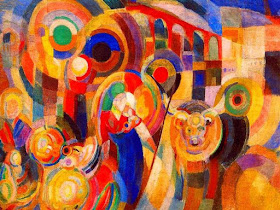































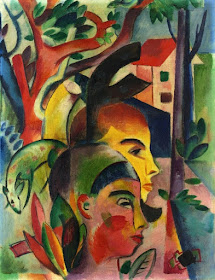




























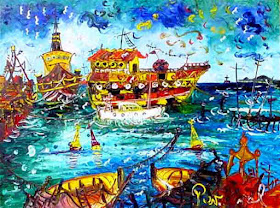






















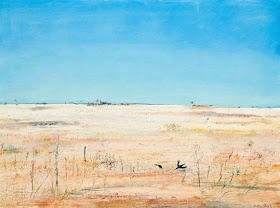







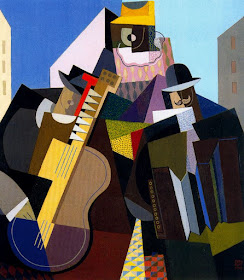































































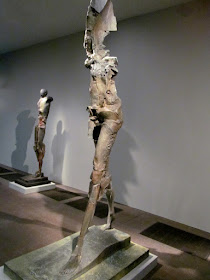













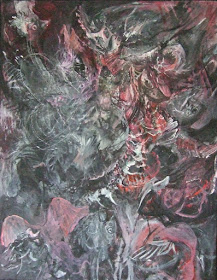























































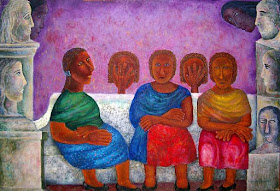

































































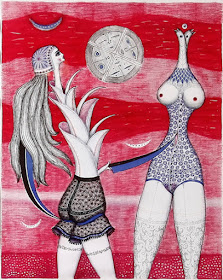







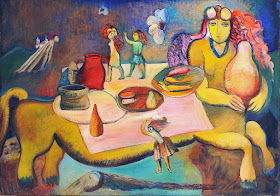








































































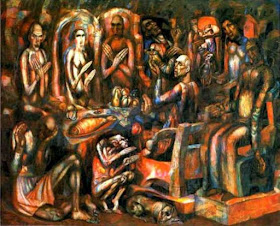










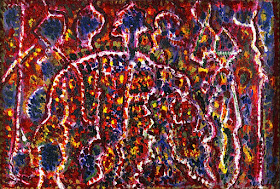








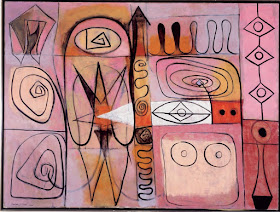


















































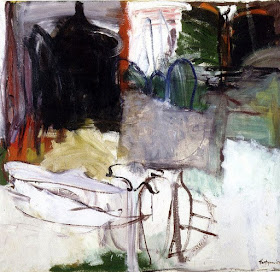

















































































































































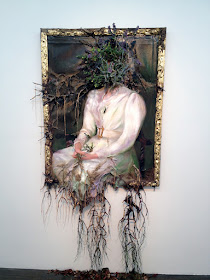










































































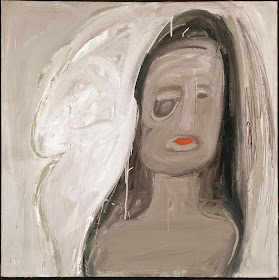












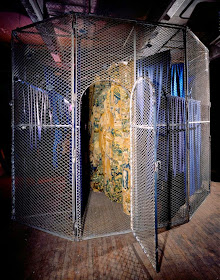






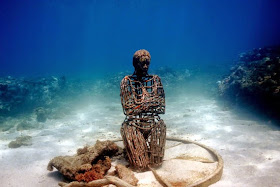


















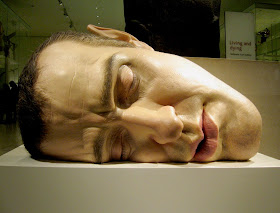












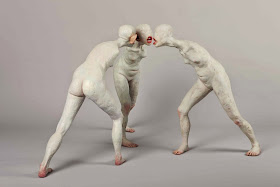

.jpg)















































































































%2C_oil_on_canvas%2C_private_collection.jpg)














































%2B.JPG)

.jpg)




































































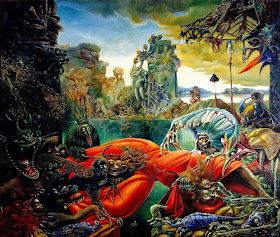



















































No comments:
Post a Comment